Ever notice how a thoughtfully designed dog room does more than stash leashes? It protects joints, calms anxious pups, and keeps mud at the door while adding resale-ready style. The boom in “barkitecture” proves homeowners now treat canine comfort as essential interior design, blending washable finishes, built-ins, and even smart tech. Below are twenty dog room ideas—each self-contained, actionable, and easy to mix-and-match—so you can assemble a space that meets your dog’s physical, emotional, and practical needs without wrecking your budget or aesthetic. Pick the concepts that fit your square footage and lifestyle, then watch your pup settle in like the room was always theirs.
1. Built-In Dog Crate Alcove
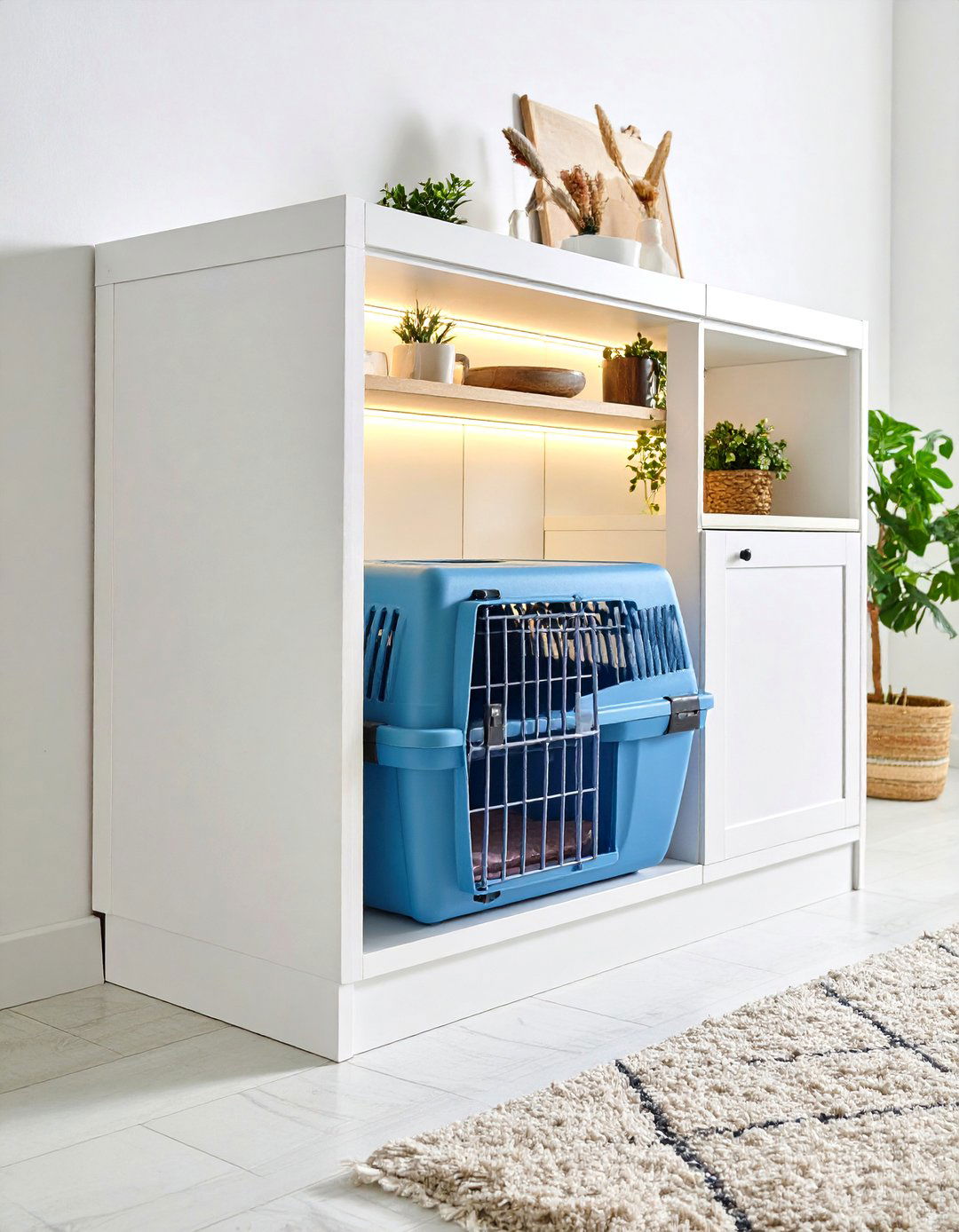
A built-in alcove turns the dog crate from bulky eyesore into seamless cabinetry, giving your dog a secure den while freeing floor space. Measure the crate’s footprint, add 5–10 cm for ventilation, and frame an opening in a bookcase, mudroom cabinet, or media console. Install a removable mesh or slatted door so you still have airflow during naps. Designers note that integrating lighting strips lets you dim the alcove at bedtime for a cave-like feel, which many dogs prefer. Finish the interior with wipe-clean, scratch-resistant paint, and slide in a machine-washable pad. You now have a functional dog room zone that blends invisibly with your décor.
2. Mudroom-Style Dog Room for Messy Paws
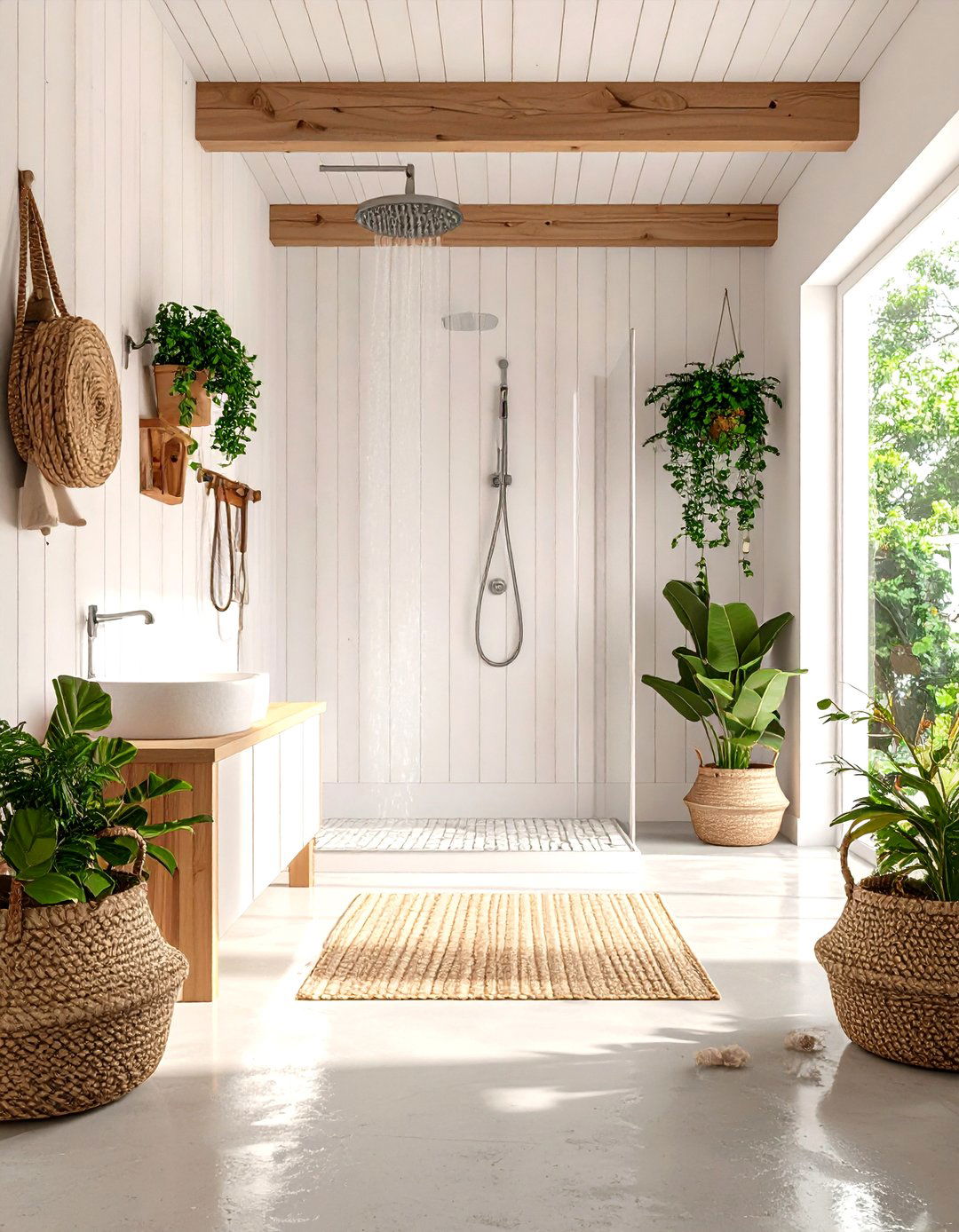
Converting or annexing part of the mudroom into a dedicated dog room keeps dirt confined to a single, hose-friendly zone. Tile or sealed concrete flooring shrugs off muddy splashes, while beadboard walls tolerate wet shake-offs. A low-threshold dog shower with handheld sprayer at knee height lets you rinse paws before they reach the sofa, and plumbing a pot-filler above nearby water bowls means constant fresh refills. Add hooks for leashes, cubbies for towels, and a wall-mounted hair-dryer bracket to speed up drying. Because the space already has utility hookups and drain lines, upgrades stay affordable and your main living areas stay spotless.
3. Elevated Dog Feeding Station Corner
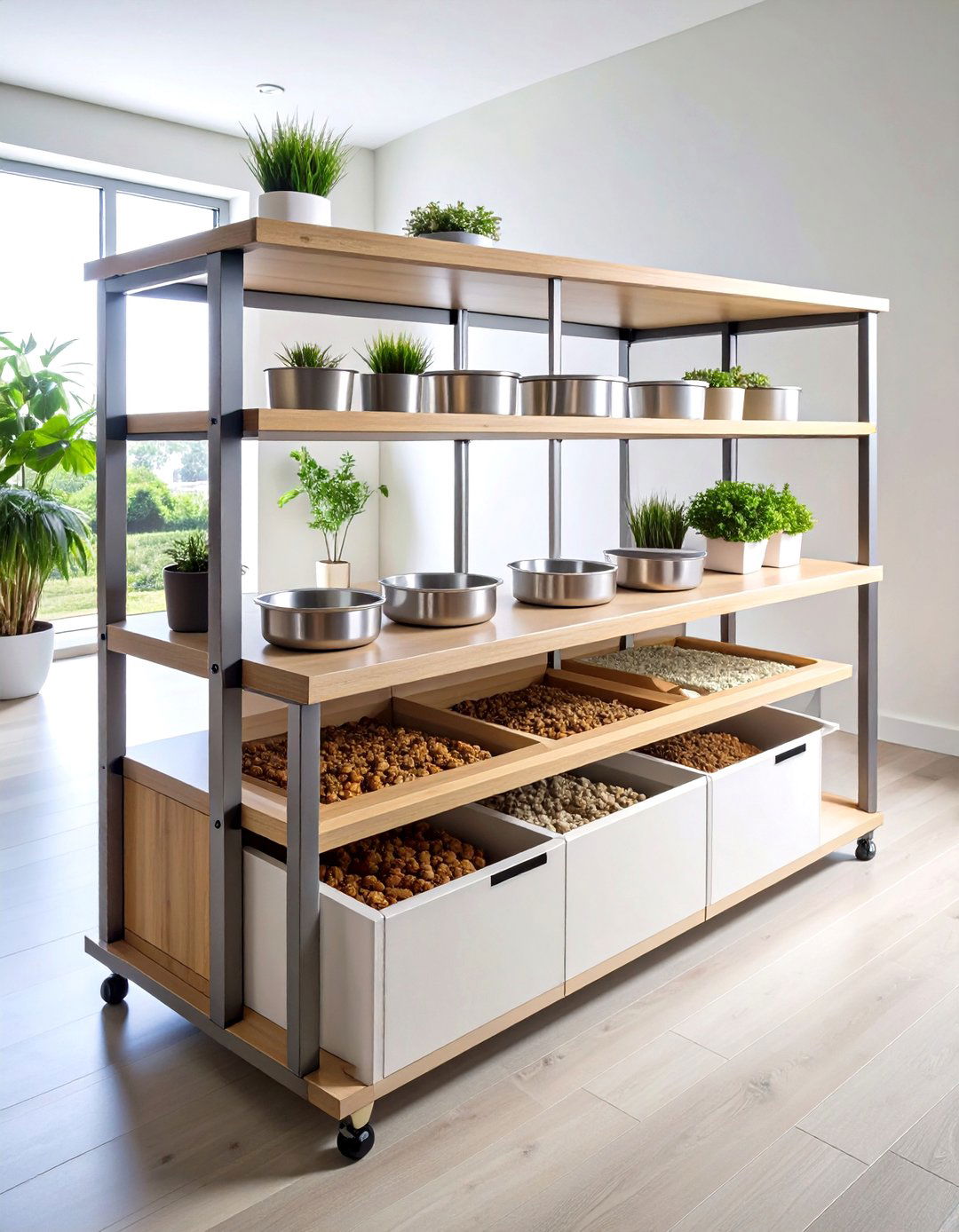
Setting the feeding corner at chest height for your dog reduces neck strain and keeps the dog room cleaner. A 2020 review of raised feeders lists improved posture, easier swallowing, and less floor splash, especially for large or arthritic dogs. Build a simple box frame with adjustable risers or cut recessed holes into a cabinet drawer so bowls sit flush. Line the cavity with silicone caulk to stop water seepage, and add a pull-out tray underneath for stray kibble. Position the station away from sleeping areas to separate food scent from rest, and remember to wash bowls daily to prevent bacterial build-up.
4. Washable Flooring and Rugs for the Dog Room

Flooring sets the maintenance tone for any dog room, so choose materials that laugh at scratches and spills. A 2025 pet-resistant flooring guide highlights water-resistant laminate, tile, and luxury vinyl as top picks because they wipe clean and resist claw marks. If you prefer warmth underfoot, add low-pile, machine-washable rugs secured with rug-to-floor Velcro to prevent sliding. For older dogs, slip-resistant textures make movement safer. Seal any transition strips with silicone to keep accidents from seeping below, and store a stack of washable runners by the door for quick swaps on muddy days. Your vacuum will thank you.
5. Sun-Lit Dog Room Window Seat
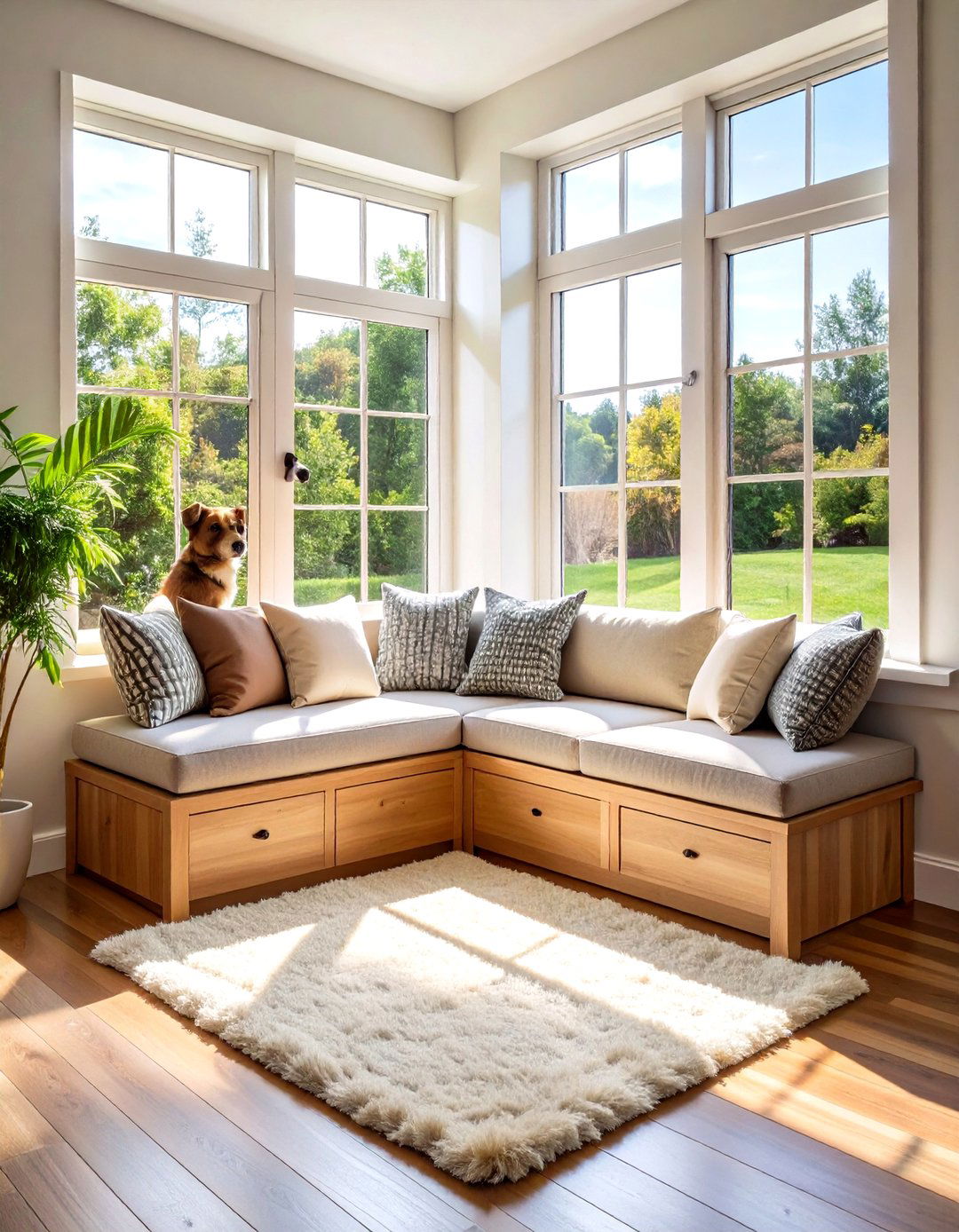
Dogs crave natural light for warmth and vitamin D synthesis; a dedicated window seat makes their dog room feel like a front-row nap theater. Observational notes on canine sunbathing report that a sunny seat supports bone health and can lift mood. Install a wide sill at dog-eye level or build a cushioned bench under an existing window. Choose UV-stable, washable fabric and incorporate a small storage drawer beneath for cozy blankets. A hinged lid lets you hide seasonal items, while adding a safety rail prevents accidental slips for smaller breeds. Curtain or shade options allow you to control midday glare.
6. Wall-Mounted Toy Storage Keeps the Dog Room Tidy
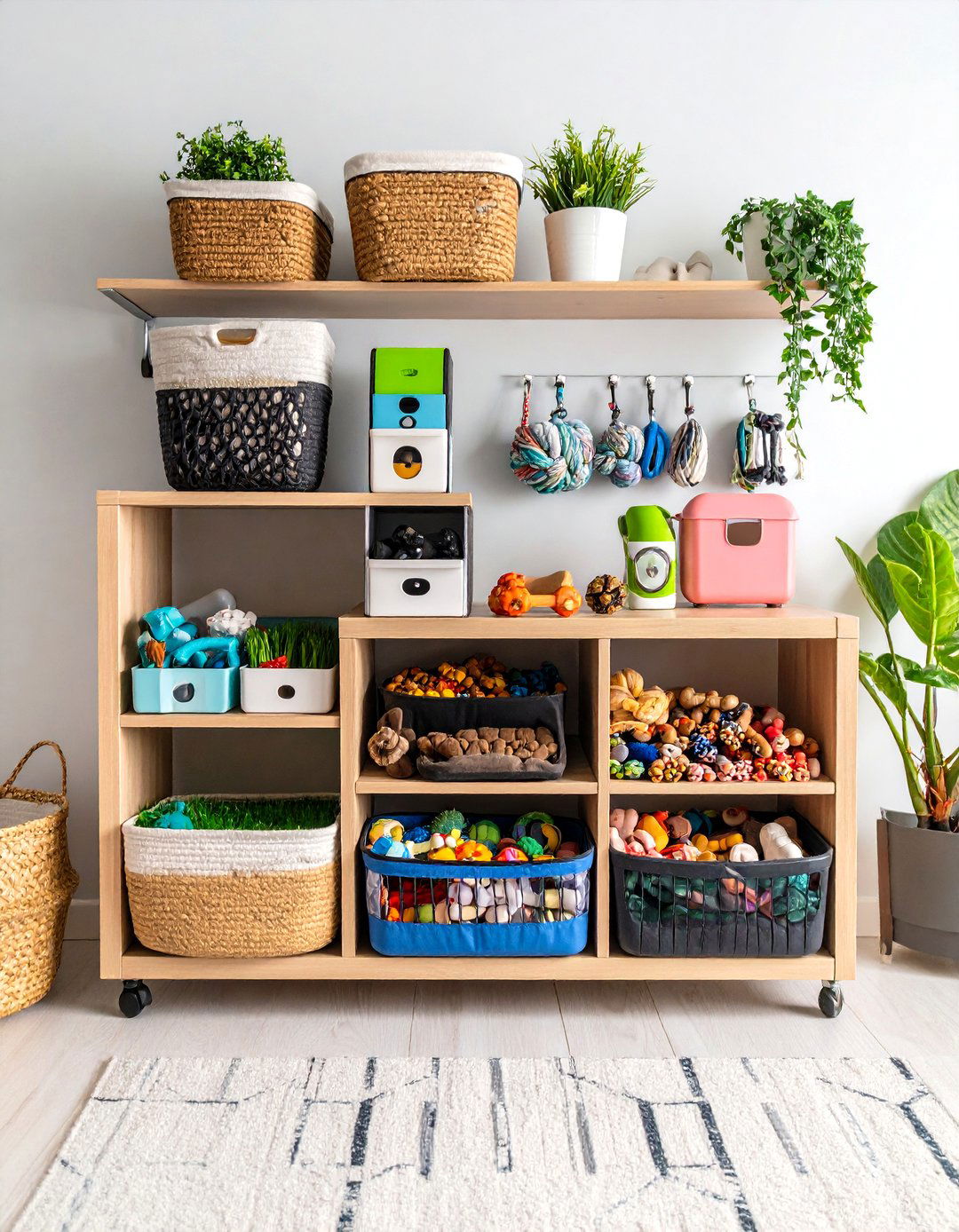
Vertical storage turns the dog room walls into clutter-free organizers. Pet-organization experts suggest wall-mounted shelves or pocket organizers so toys dry between play sessions and stay off the floor where they become slip hazards. Choose baskets with open fronts at dog height to encourage self-service retrieval, then mount higher shelves for rotation stock. Assign labels like “chews,” “plush,” and “puzzles” to simplify cleanup—dogs quickly learn where to search. Adding a shallow charging shelf above keeps treat-dispensing gadgets powered without trailing cables, an idea borrowed from recent home storage hack features.
7. Calming Color Palette Dog Room
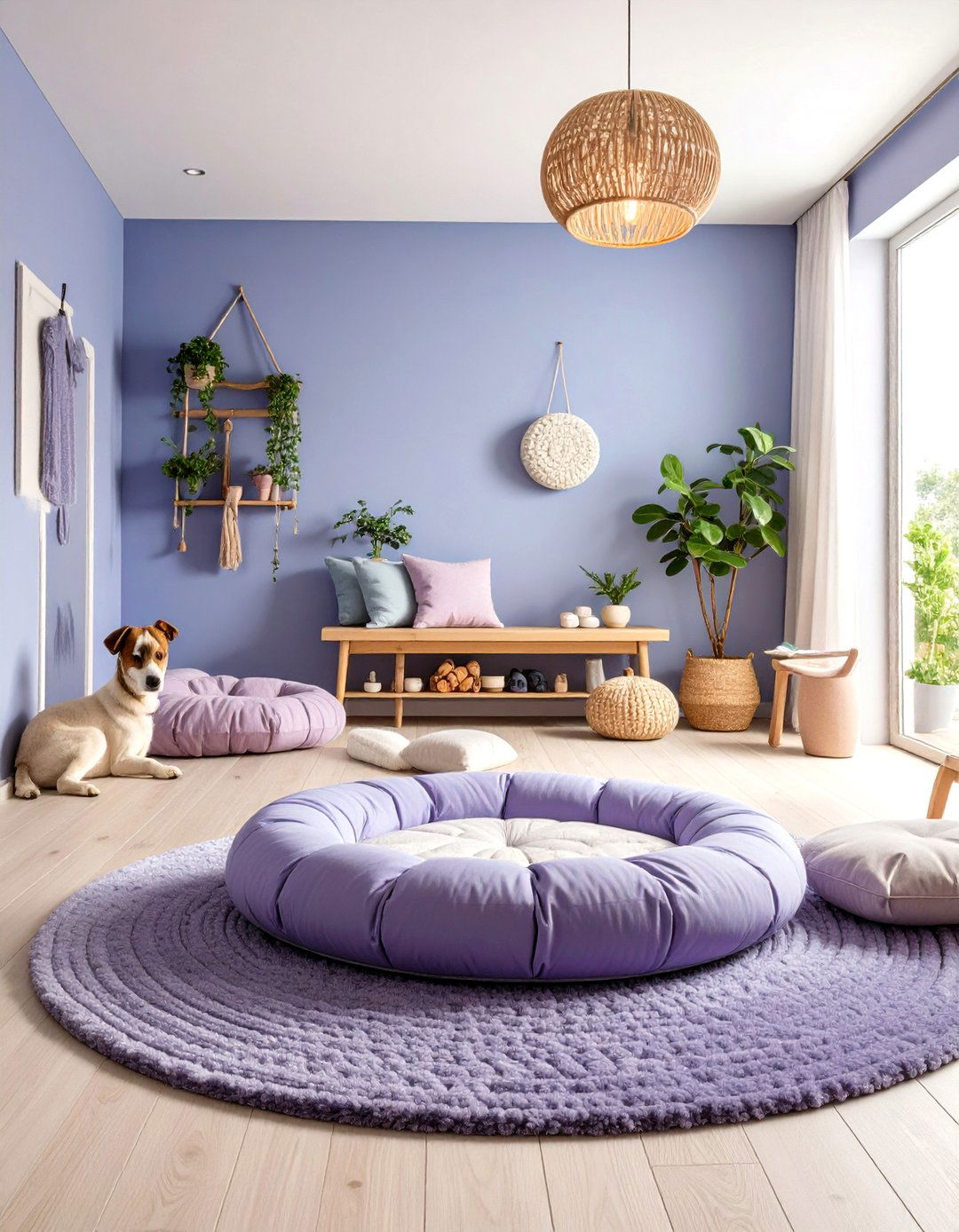
Color affects canine behavior, and studies show blue and violet tones help anxious pups relax while bright yellows can over-stimulate. Paint the dog room walls a muted sky-blue or lavender and pair with dimmable warm-white lighting for evening wind-downs. If you share the space, use neutral cabinetry but include accent panels in the calmer hues so your dog sees soothing shades at eye level. Layer in weighted blankets or bolster beds in matching palettes to reinforce the chill vibe. Remember that color harmony only works when the environment stays clutter-free and noise-controlled, so combine this tip with soundproofing if fireworks are an issue.
8. Dog Room Shower and Grooming Station
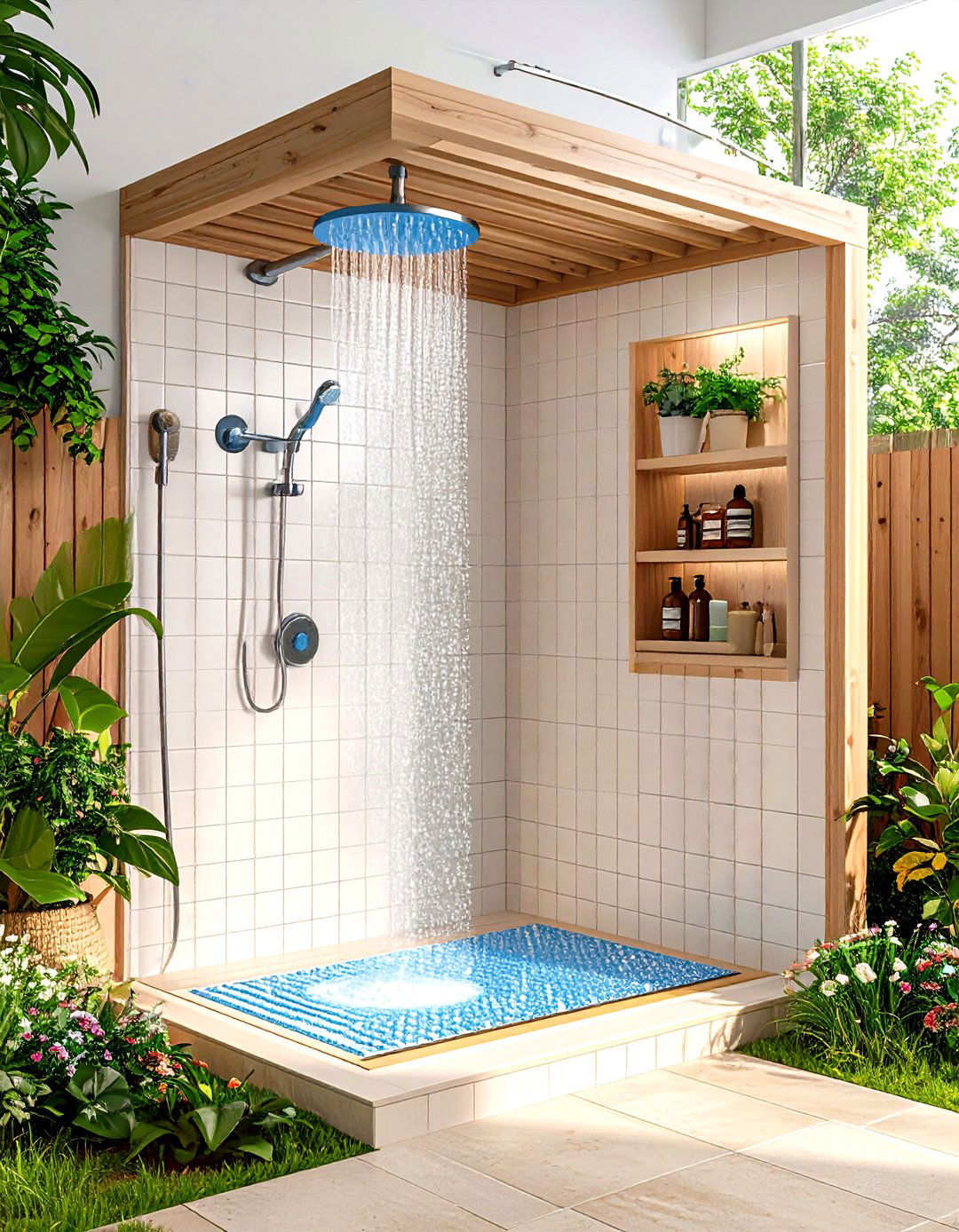
Instead of tracking hair into bathrooms, install a half-height dog shower directly in the dog room. A designer case study showed that a 91 cm-wide tiled stall with detachable sprayer, slip-resistant floor, and wall hooks for shampoo keeps grooming fast and back-friendly. Position hot- and cold-water mixing valves just above knee level and include a built-in niche for products. Overhead, a heat-lamp fixture speeds drying without resorting to loud blowers. Finish with a floor-level trench drain protected by a removable hair trap for easy cleanout. The result: fewer costly grooming trips and cleaner household floors.
9. Multi-Level Dog Room with Loft Bed
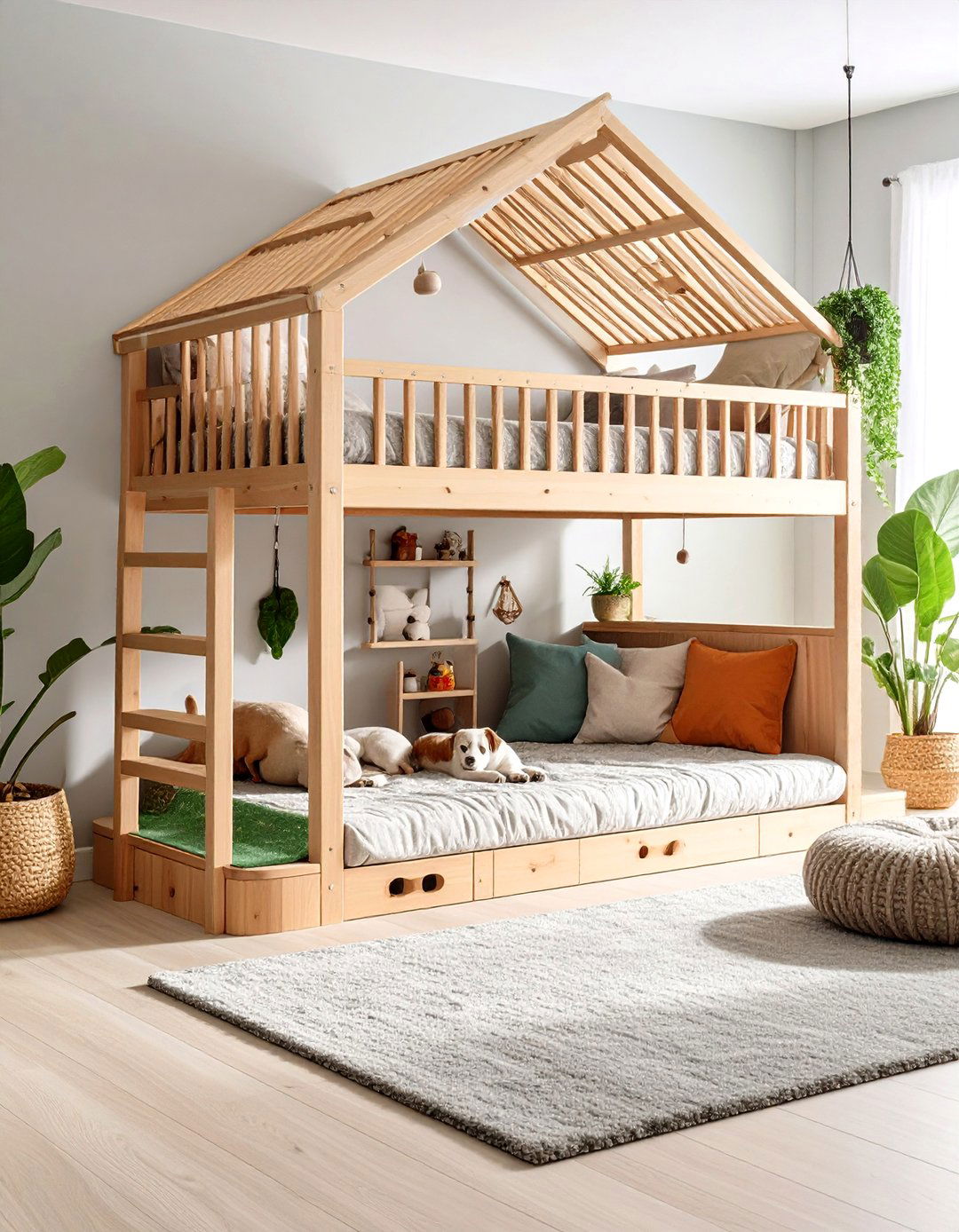
Going vertical doubles usable space in small homes. DIY instructions for dog bunk beds show how plywood frames can create a secure lower den plus an upper lounge for lookout duty. Anchor the structure to wall studs, add guardrails on the loft, and install carpeted ramps at a gentle 18-degree incline to protect joints. Under the bottom mattress, integrate shallow drawers for leashes and first-aid kits. The tiered layout also separates multiple dogs peacefully: older or shyer pups can claim the lower hideaway while energetic companions perch above. Just ensure ceiling fans clear the new vantage point.
10. Convertible Guest-Dog Room Combo
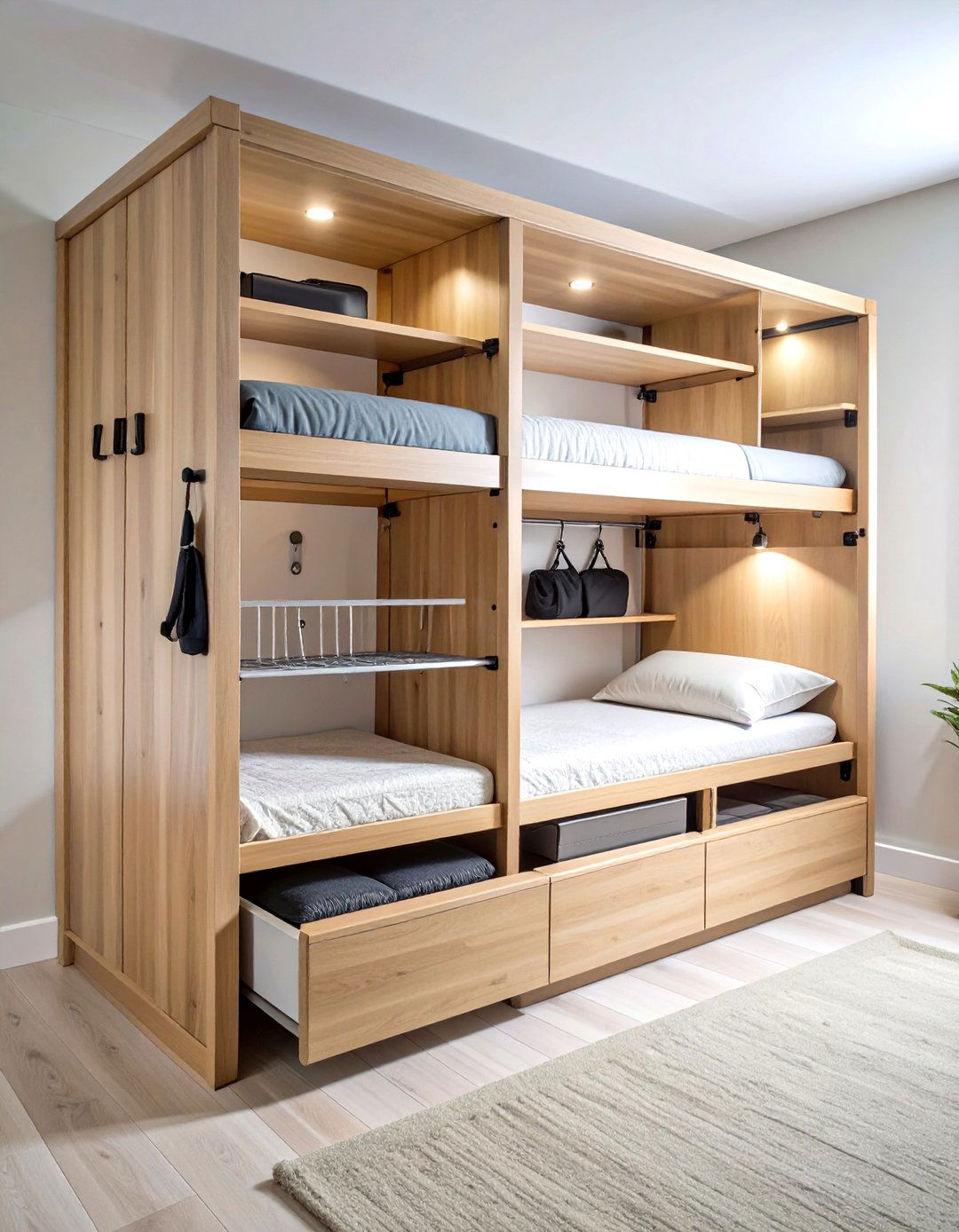
Short on rooms? Design a flexible space that toggles between guest bedroom and dog room in minutes. Use a murphy bed whose underside hides pegboard panels for hanging dog gear when folded up. Designers behind recent multipurpose pet spaces recommend fabricating the lower third of the wall in wipe-clean paneling so midnight nose prints don’t stain guest linens. A rolling credenza houses toys and converts to a luggage stand, while a flip-down feeding shelf tucks away behind cabinet doors. By zoning using different flooring—area rug under the murphy bed, tile near the dog corner—you signal function changes without renovating.
11. Climate-Controlled Dog Room Comfort
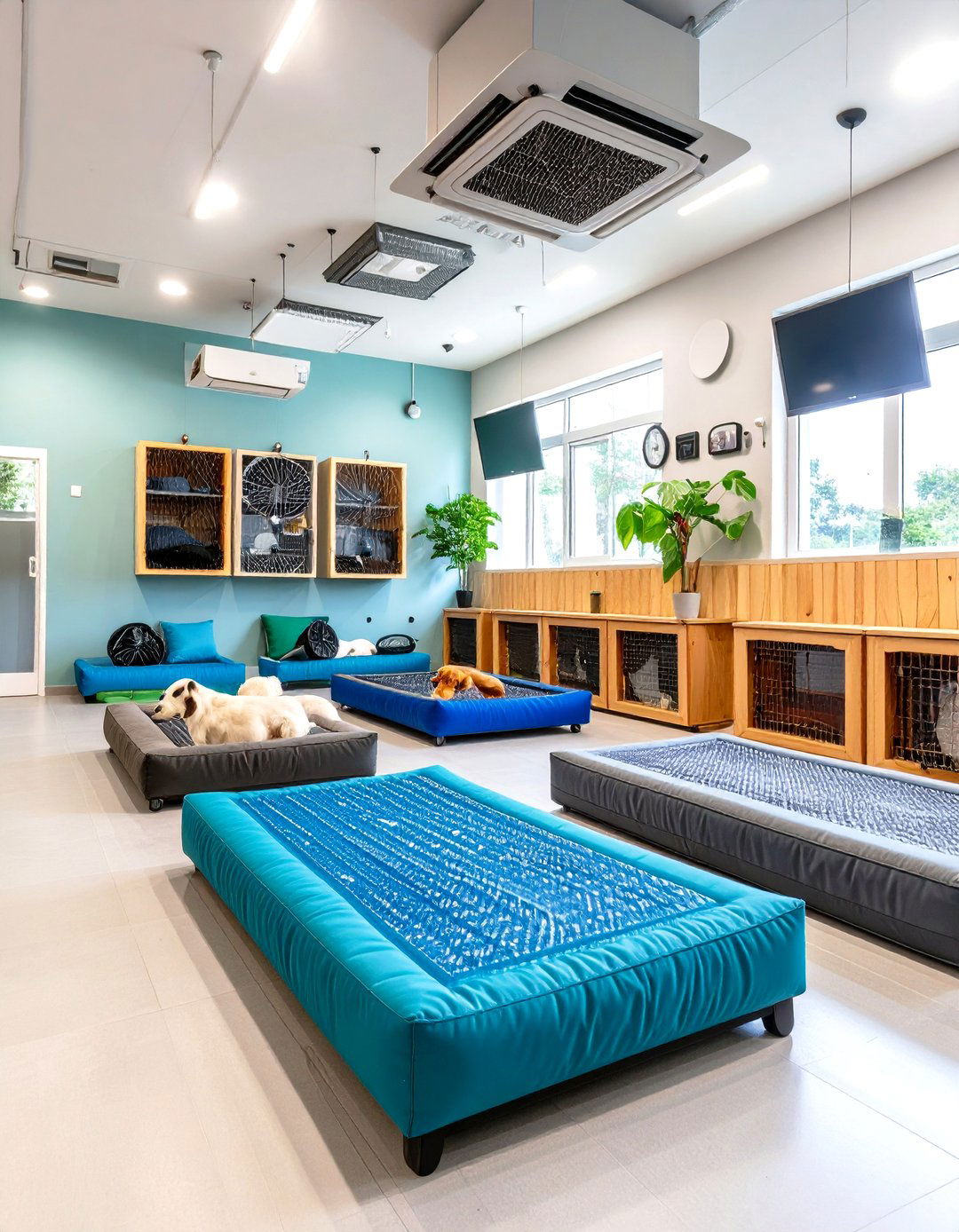
Temperature swings stress dogs more than humans, so adding basic HVAC upgrades makes the dog room usable year-round. Guidance on kennel ventilation stresses consistent airflow via wall vents combined with small fans or a ducted mini-split to keep humidity below 60 percent. Insulate walls and weather-strip doors to reduce energy waste, and place a simple digital hygrometer at nose height so you can monitor conditions. In hot climates, reflective window film and raised mesh beds enhance cooling, while radiant floor mats ease stiff joints in winter. A comfortable climate reduces barking triggered by discomfort and supports healthy sleep.
12. Interactive Wall Features Enrich the Dog Room
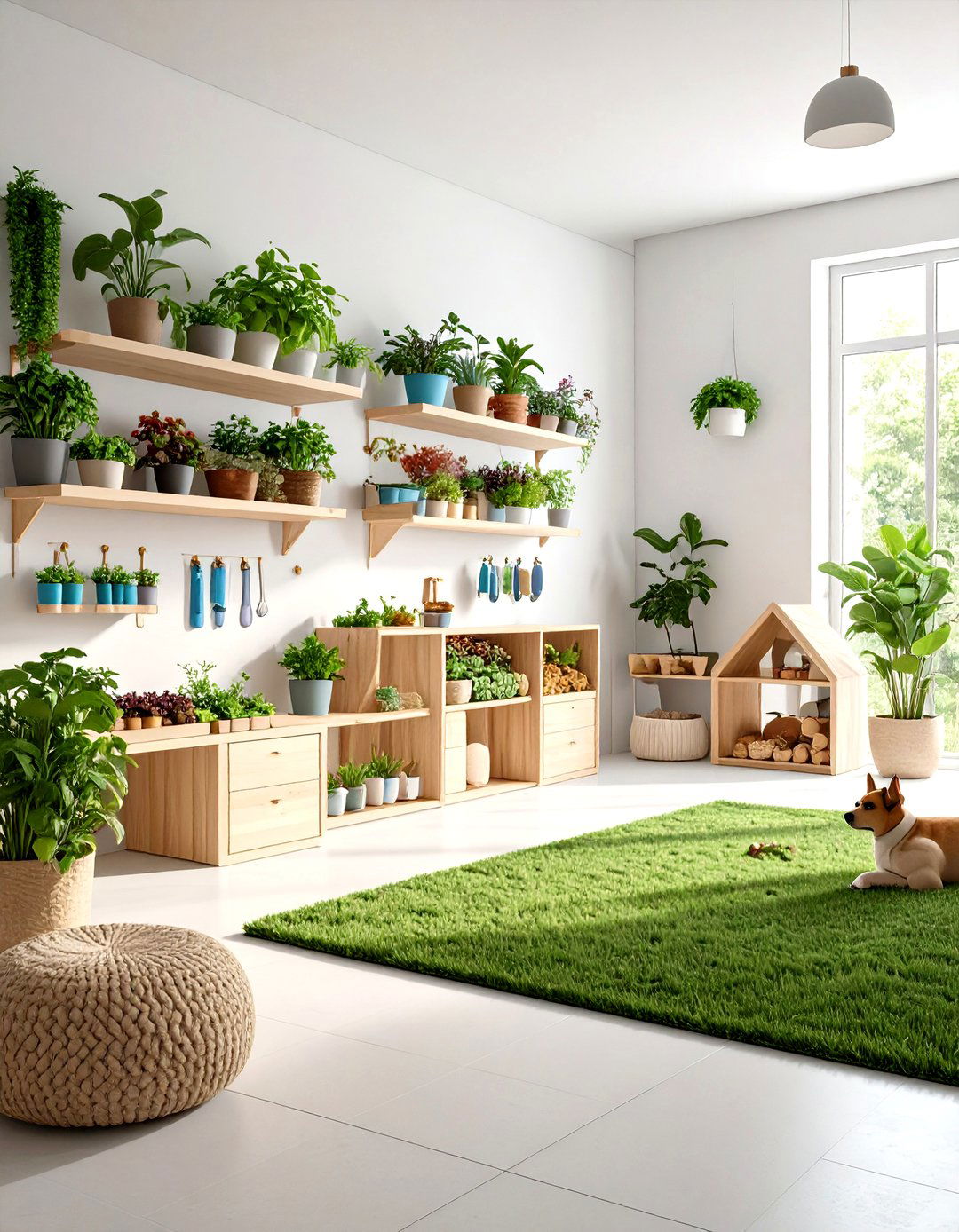
Enrichment walls give your dog a job indoors. A sensory-yard tutorial describes attaching herb-filled terracotta pots, textured panels, and treat-dispensing tubes at snout level to encourage sniffing and paw exploration, boosting mental stimulation while reducing boredom behaviors. Space items 30 cm apart so dogs can focus on one scent at a time, and rotate fragrances weekly—think rosemary, lavender, or dill—to maintain novelty. For renters, mount the units on a removable plywood board fixed with French cleats, protecting drywall. Five minutes of sniff-work equals a brisk walk in mental calories, making this wall a rainy-day lifesaver.
13. Soundproof Dog Room for Firework Season
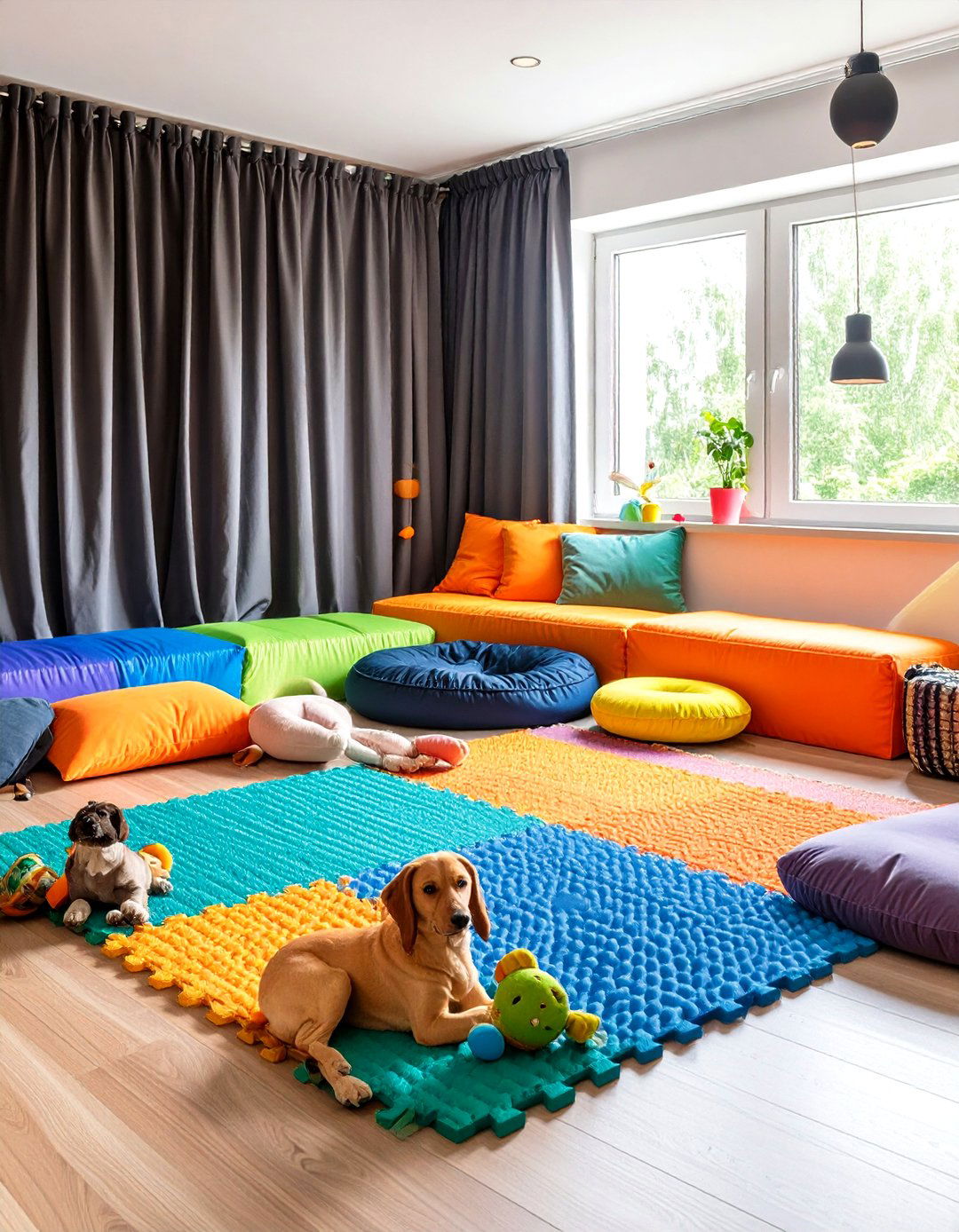
A hushed retreat shields noise-sensitive dogs during storms and holidays. Sound-dampening foam panels combined with dense door sweeps and blackout curtains can cut external booms by up to 30 dB according to acoustic supply guides. Behavior specialists also advise creating a dark interior nook and supplying frozen broth treats or puzzle toys to distract from distant bangs. If budget allows, install a small white-noise machine on a timer to mask sudden spikes. Introduce the safe room weeks before noisy events so your dog associates it with relaxation, not panic.
14. Under-Stairs Dog Room for Small Spaces
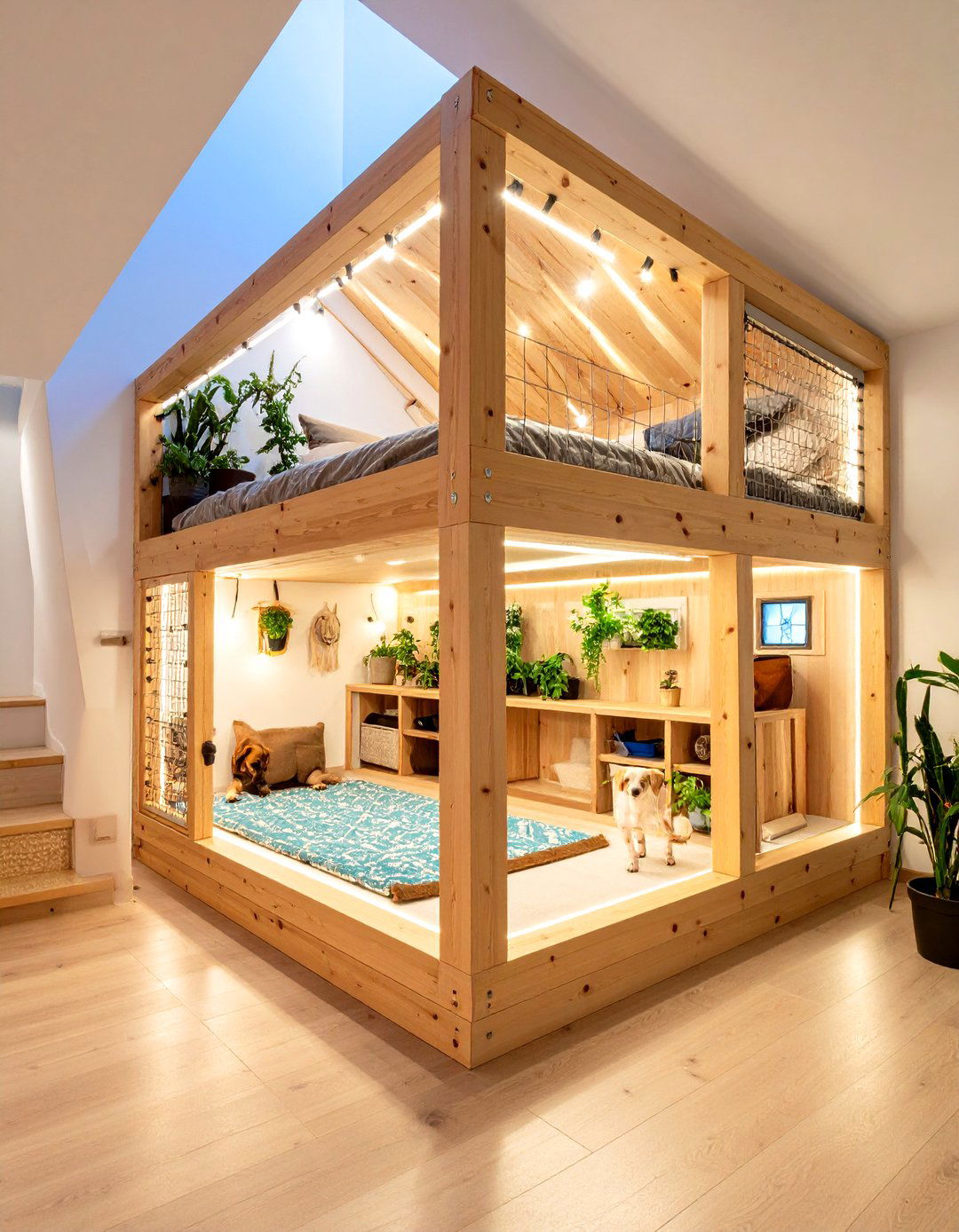
The void beneath a staircase often becomes a dust trap; framing it into a mini dog room reclaims wasted volume. Inspiration photos show custom gates matching stair balusters, integrated lighting, and even small windows cut into the side panel for visibility. Start by adding subfloor insulation to buffer temperature, then line walls with moisture-resistant drywall. Because headroom is limited, favor low-profile orthopedic beds and mount bowls on a sliding drawer. Leave access panels for plumbing or electrical routes that may share the cavity. The cozy cave vibe suits dogs who relish den-like security.
15. Indoor-Outdoor Access Dog Room with Smart Pet Door

Granting controlled yard access keeps the dog room odor-free. A step-by-step installation guide explains marking, cutting, and framing a pet door through a hollow-core or solid panel door with basic tools. New smart variants use Bluetooth tags to unlock only for your dog and seal automatically against weather, even offering customizable RGB lighting—a feature highlighted at a 2025 tech showcase. Mount the door 5 cm above shoulder height to minimize spinal crouch, add an exterior awning to fend off rain, and install a washable doormat inside to trap debris before paws hit the main floor.
16. Repurposed Furniture Stars in the Dog Room
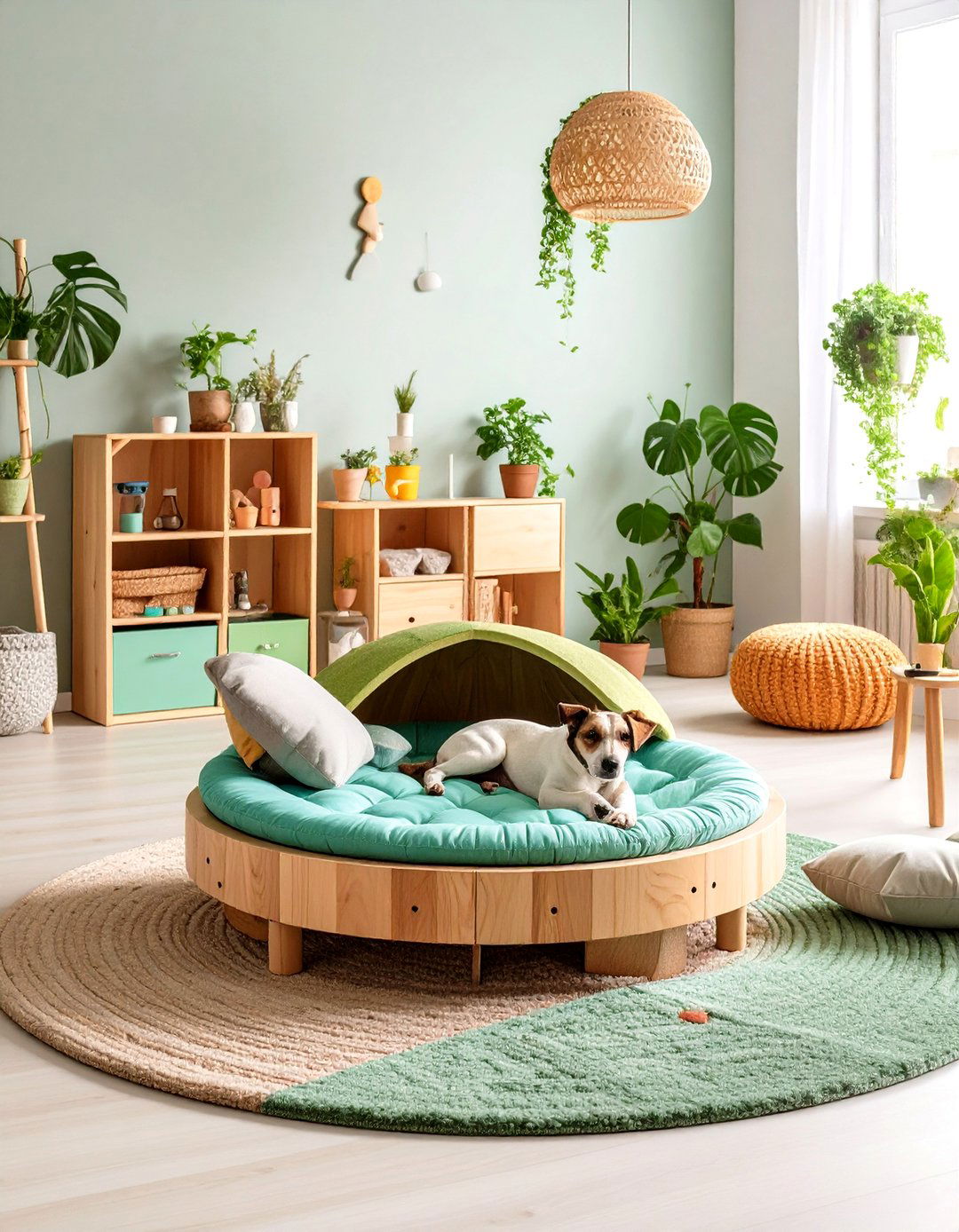
Upcycling an old side table, dresser drawer, or TV cabinet into a stylish dog bed saves money and diverts waste. DIY tutorials demonstrate sanding, adding ventilation holes, and fitting memory-foam cushions to create furniture that hides in plain sight. Furniture makeover roundups confirm that repurposed pieces add personality and can be finished to match existing trims for a cohesive look. Just ensure interior edges are smooth and sealed with pet-safe paint. Attach felt pads underneath to protect floors and include a pull-out litter drawer if you cohabitate with cats.
17. Custom Artwork Personalizes the Dog Room
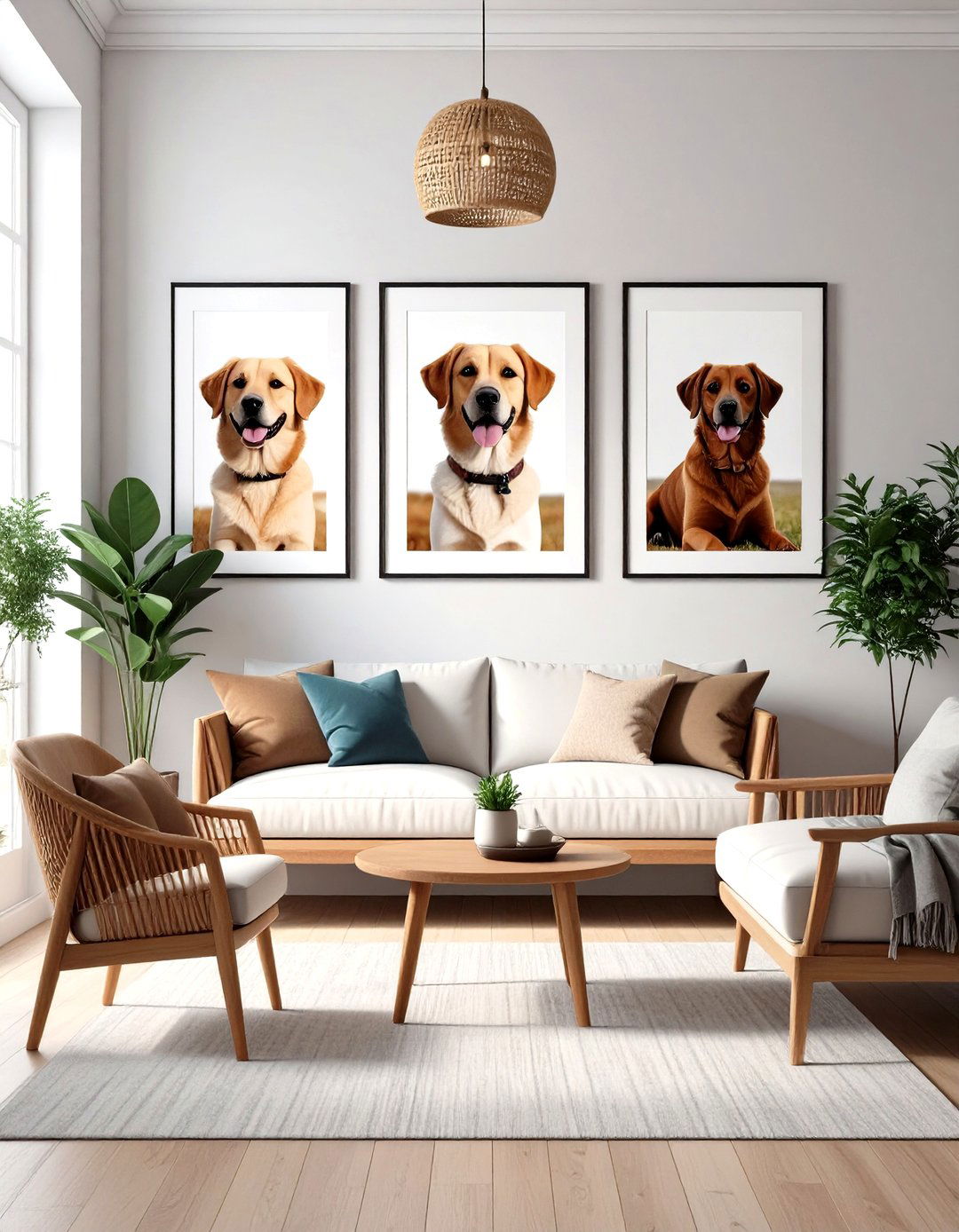
Personal touches make the dog room feel like part of the home. Ordering a digital pet portrait printed on canvas or framed print lets you celebrate your dog while reinforcing that this is their space. Local artists increasingly specialize in photorealistic or pop-art styles, often stemming from former forensic or tattoo backgrounds and offering unique mediums from watercolor to ink. Hang artwork at human eye level to protect it from playful paws, and choose shatter-resistant acrylic glazing instead of glass. Coordinate mat colors with the calming palette from Idea 7 for cohesive design.
18. Smart Home Monitoring for the Dog Room
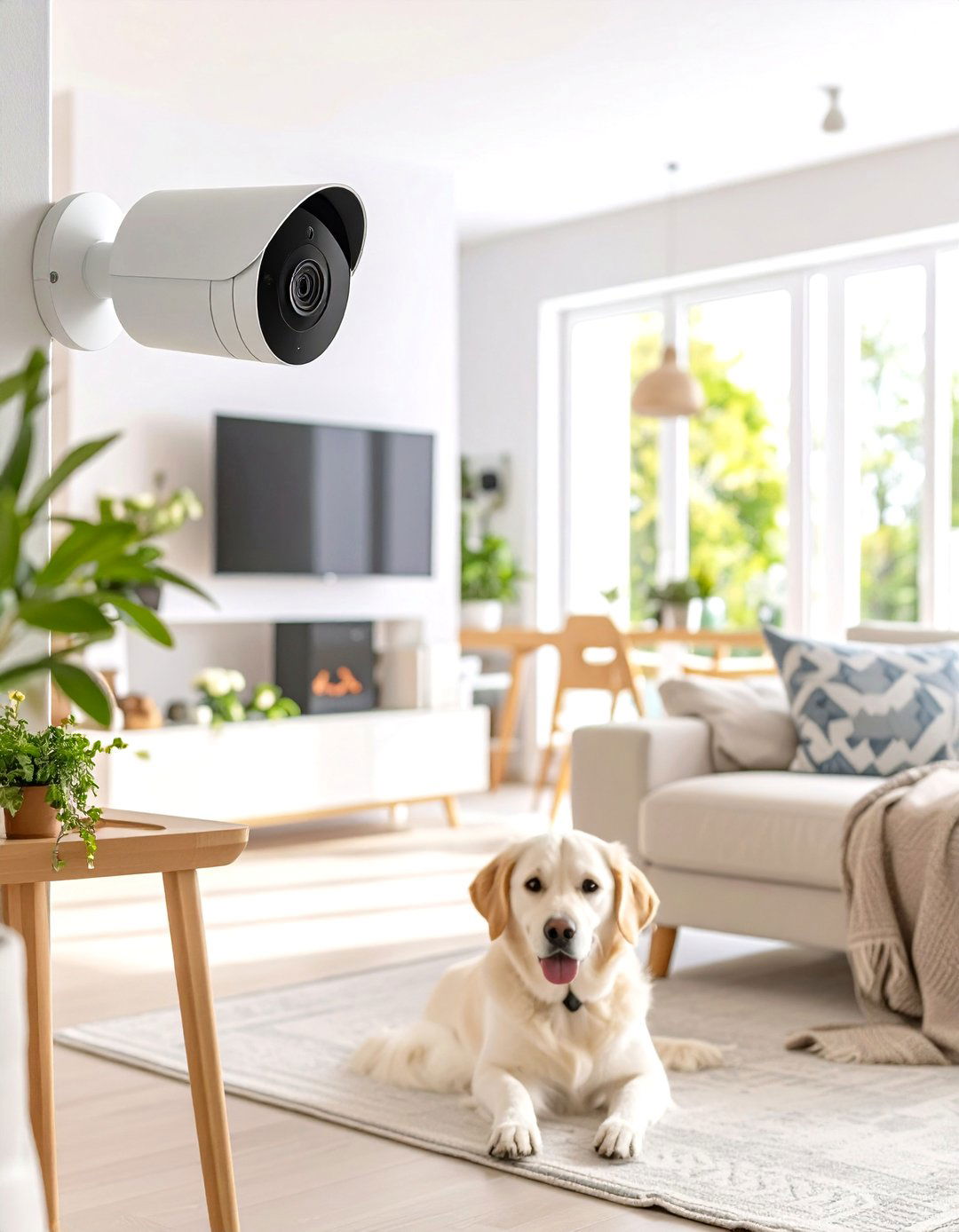
A Wi-Fi pet camera adds peace of mind when you’re away, letting you observe, talk, and even toss treats remotely. Reviews of 2025 models emphasize 360-degree pan-tilt coverage and two-way audio as must-have features. Security analysts rank budget-friendly options with micro-SD storage alongside premium cloud services, noting that Alexa or Google integration can automate lighting if your dog moves after dark. Mount the camera high enough to prevent curious noses from tilting it, and set motion-alert sensitivity low to avoid constant phone pings. Regularly update firmware for cybersecurity.
19. Travel Crate Storage Zone in the Dog Room
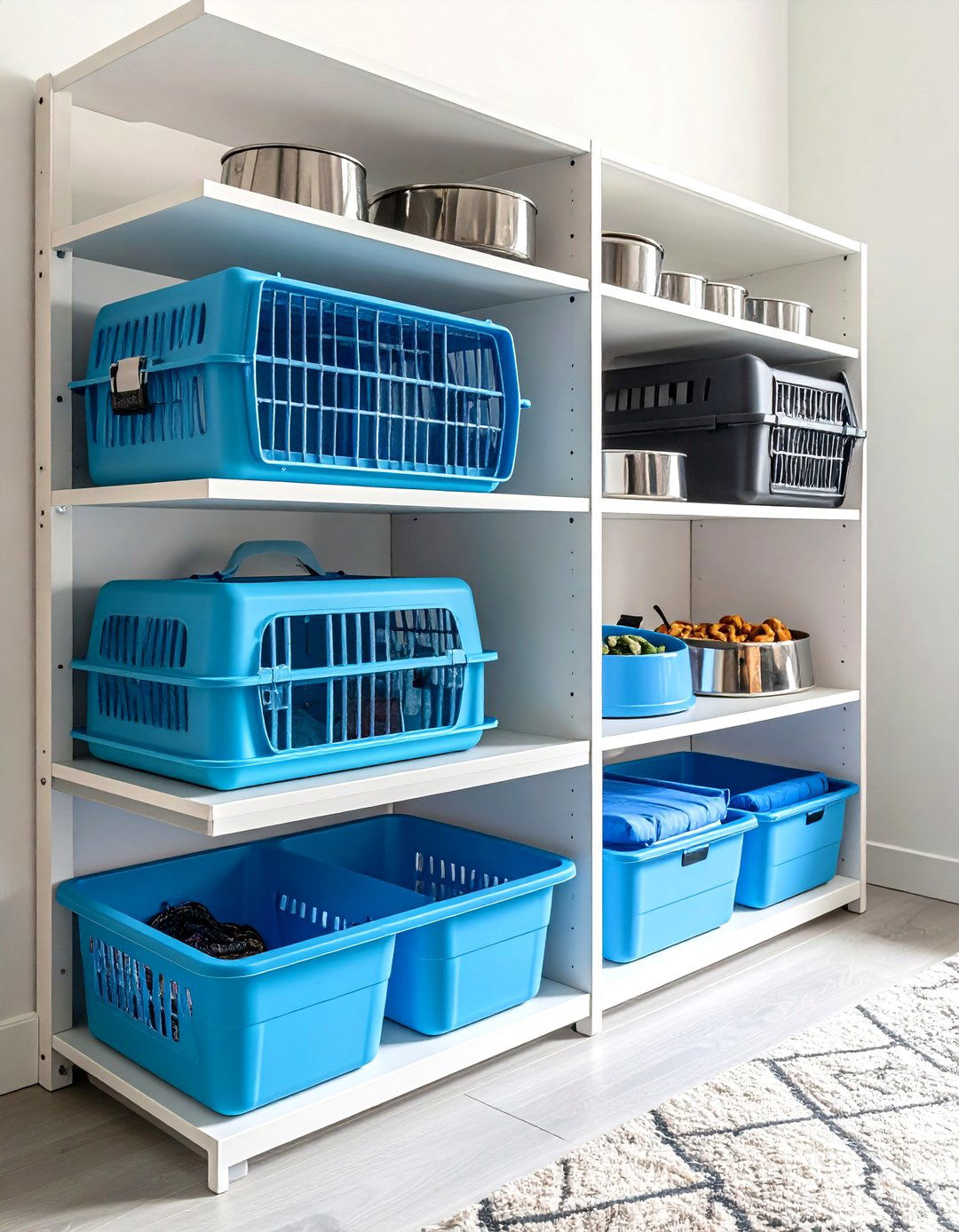
Collapsible or stackable travel crates eat up space when not in use, so designate a ceiling-height cubby where they fold flat. A space-saving crate design boasts quick fold mechanisms and stack-ability, perfect for optimizing tight quarters. Dog owners in small apartments report hiding stacked crates behind decorative screens or inside tall closets, retrieving them only for vet trips or holidays. Label each crate with dog name and emergency contact, and slide travel bowls and seat-belt clips into a hanging organizer above. This ensures you can evacuate or vacation on a moment’s notice.
20. Aging-Friendly Dog Room with Orthopedic Zones
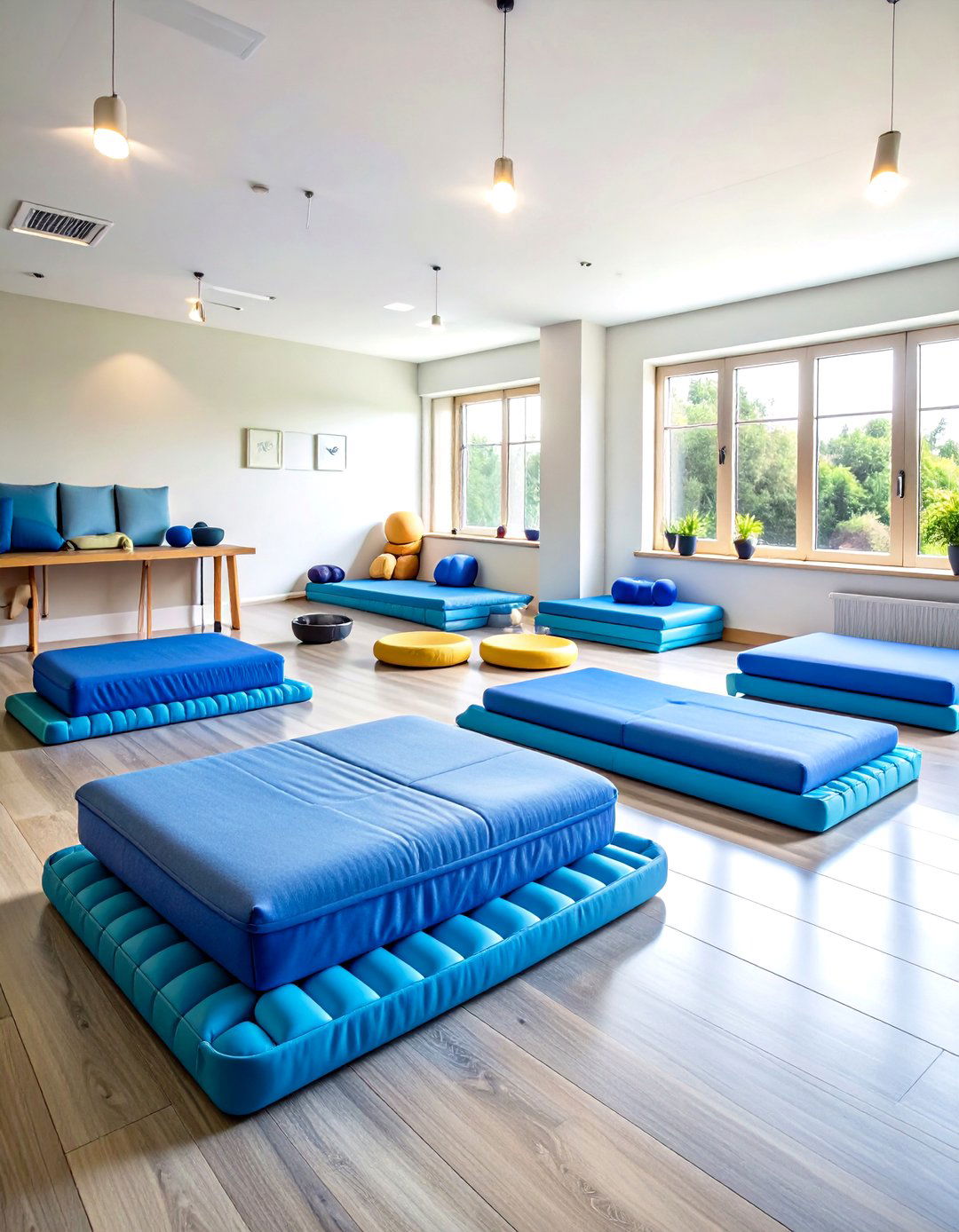
Senior dogs spend more time resting, and orthopedic foam reduces pressure on arthritic joints. Veterinary guides point out that memory-foam beds evenly distribute weight and delay progression of conditions like hip dysplasia when introduced early. Place the bed against a wall for support, and add non-slip floor runners leading to food and exit points. Elevate water bowls to shoulder height (see Idea 3) and use night-lights with motion sensors for late-night trips. Finally, schedule twice-yearly checks of the foam’s firmness; compressed spots mean it’s time to replace the cushion for continued joint relief.
Conclusion:
Whether you implement one idea or weave several together, a purpose-built dog room transforms daily routines into calm, efficient rituals. From ergonomic feeding stations and orthopedic beds to soundproofed safe havens and climate control, each upgrade targets a specific canine need while preserving your home’s aesthetics. Smart storage and modular layouts ensure the room evolves as your dog ages or your family grows. Most projects are weekend-friendly and rely on durable, affordable materials, proving that exceptional pet care doesn’t require luxury budgets—just thoughtful design and a bit of DIY spirit. Pick a starting point, roll up your sleeves, and watch your dog’s gratitude shine through every tail wag.


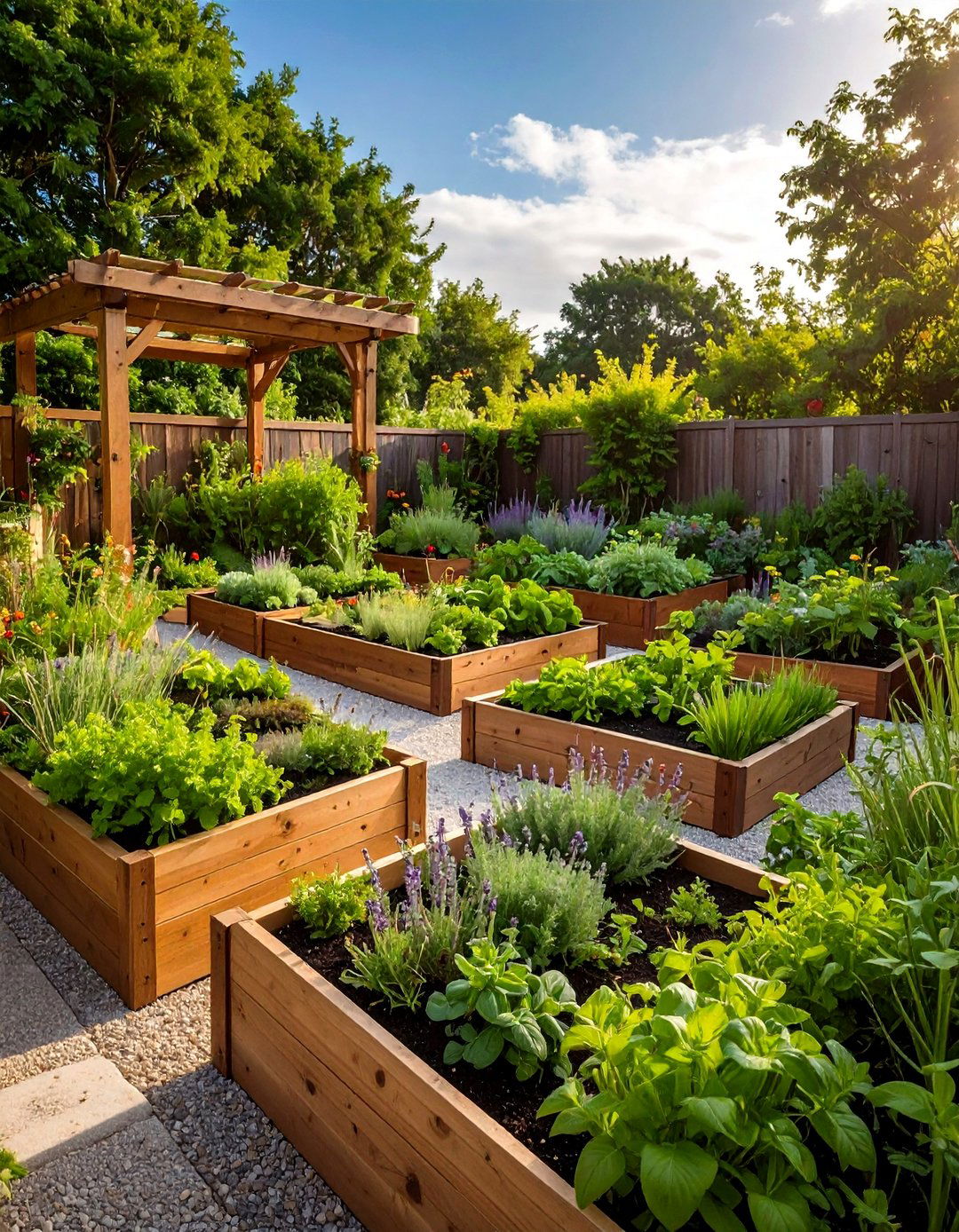
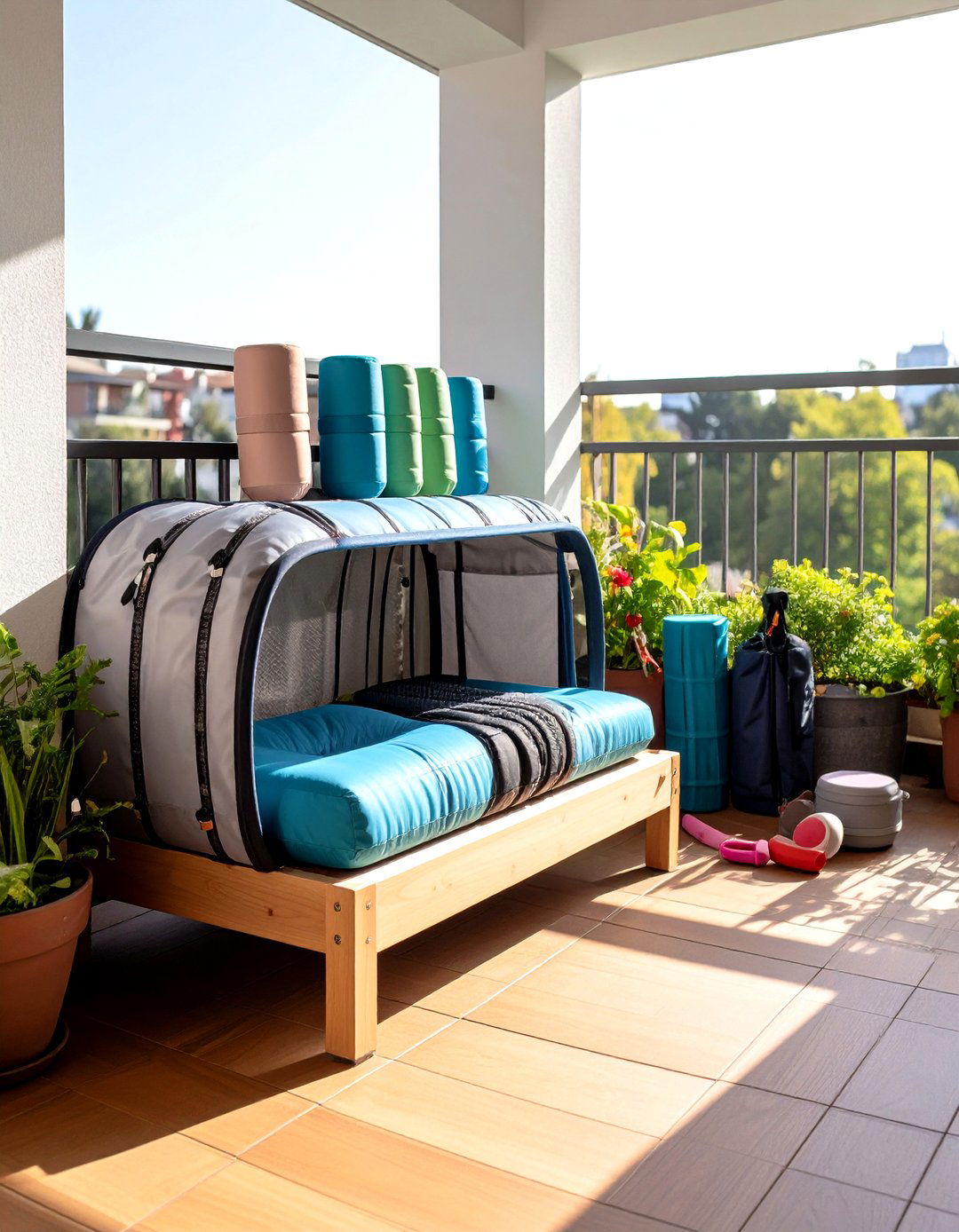
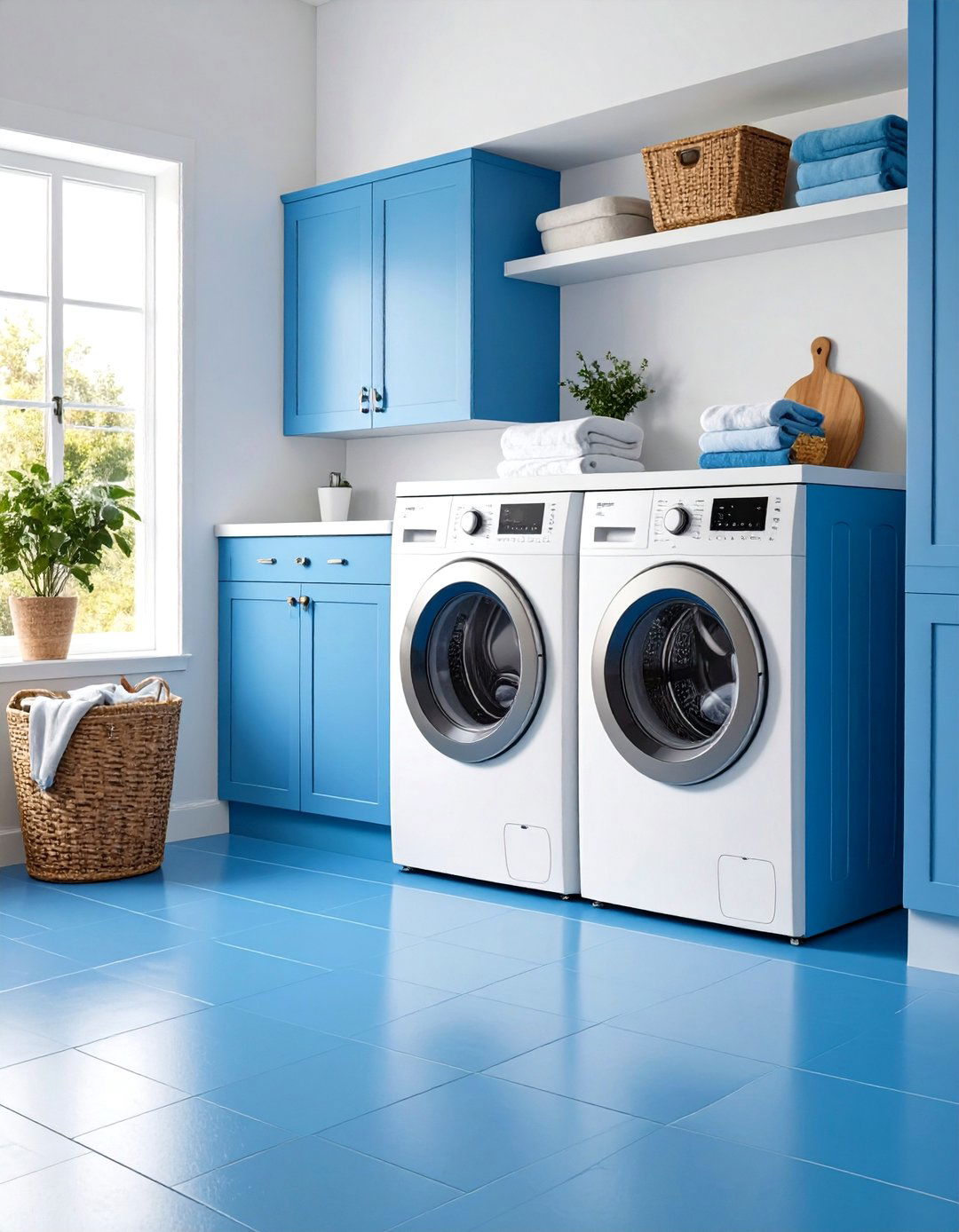

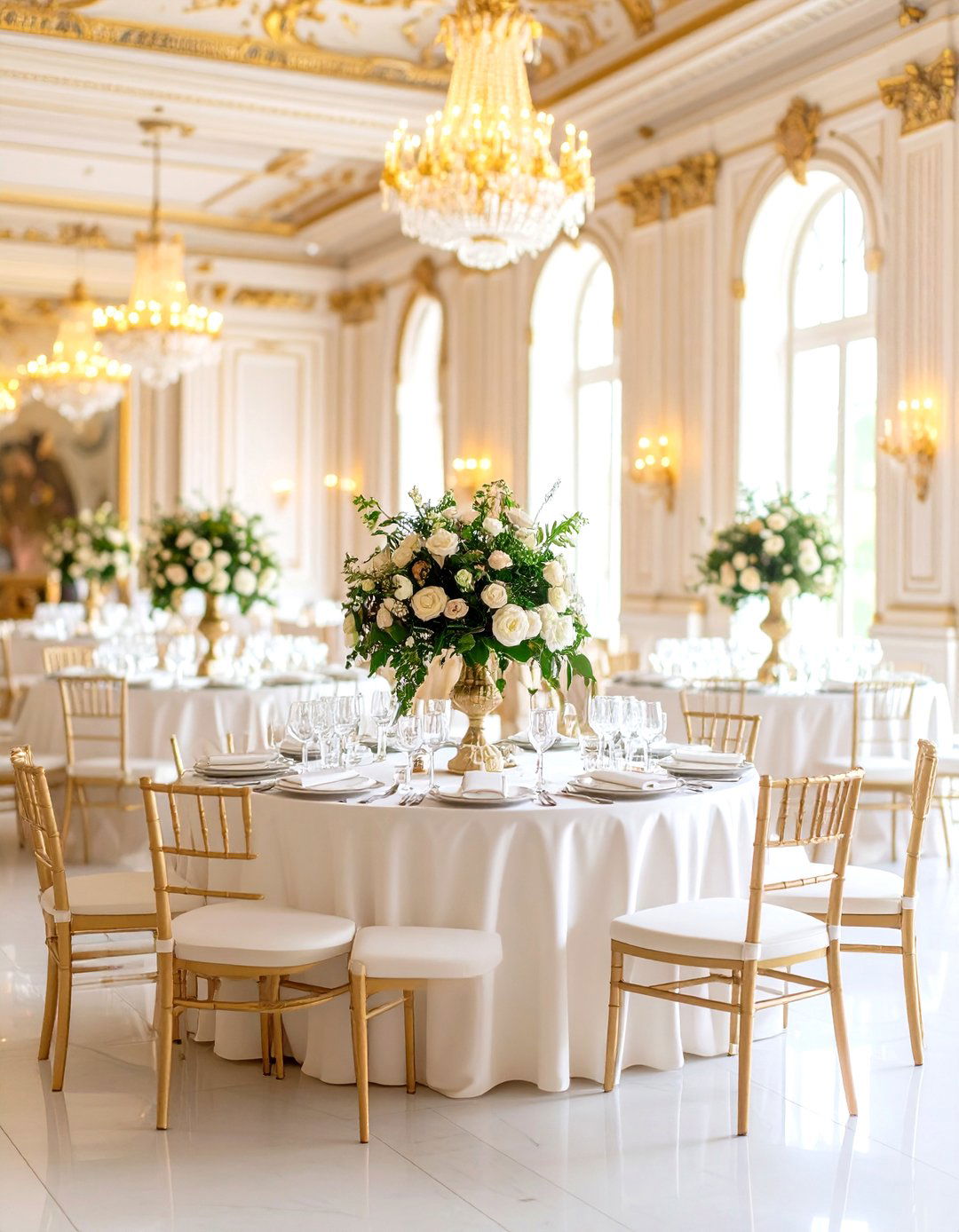
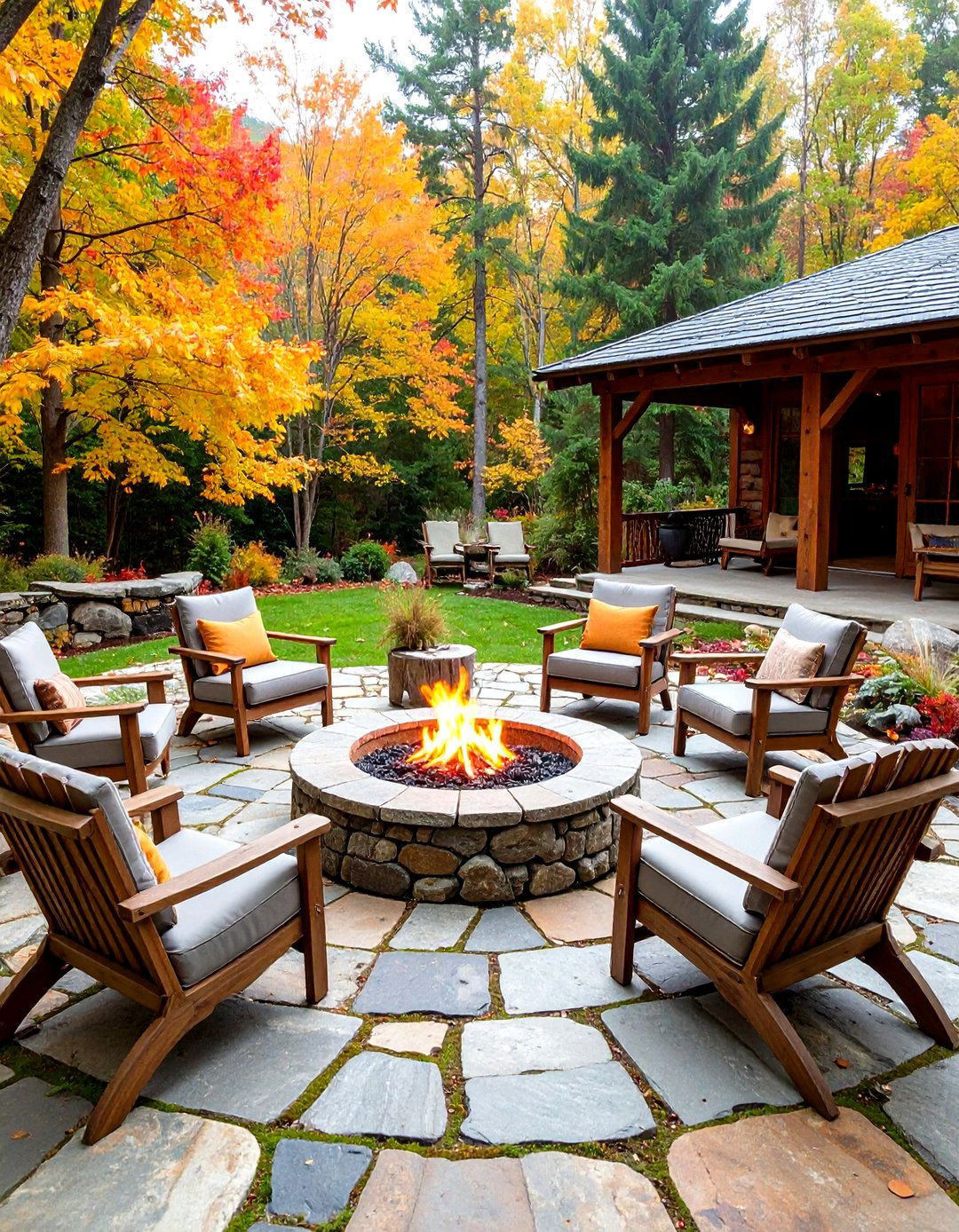
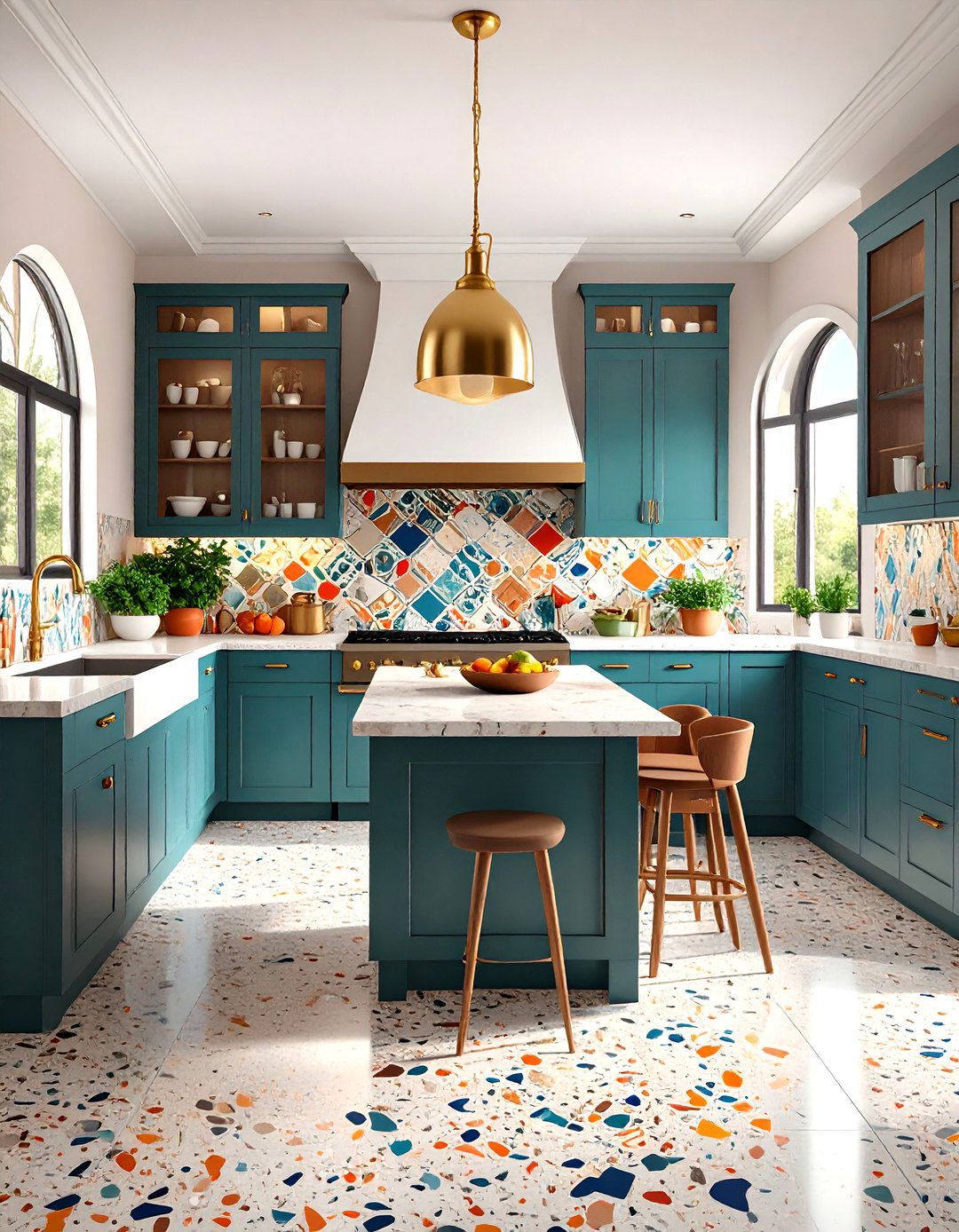

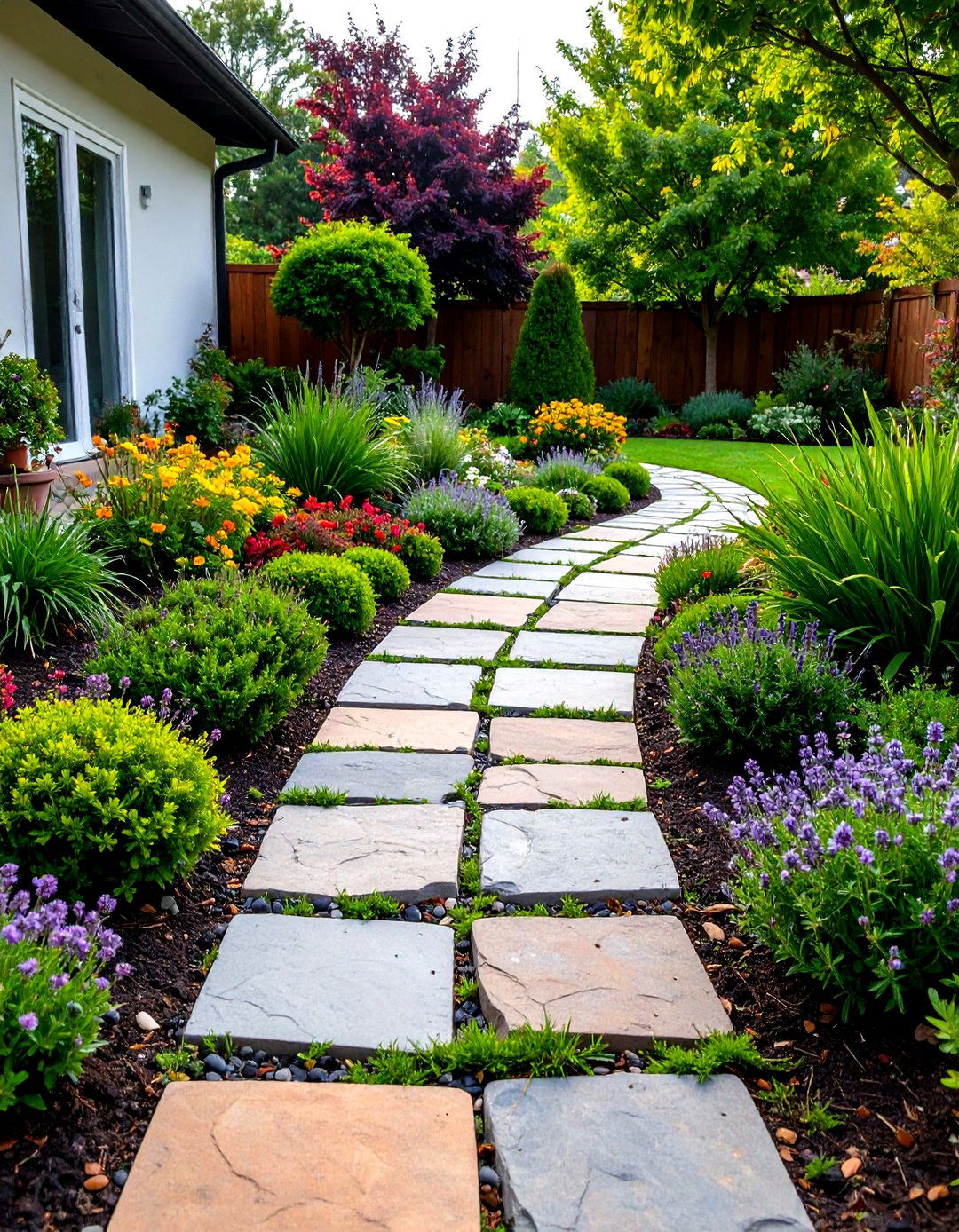
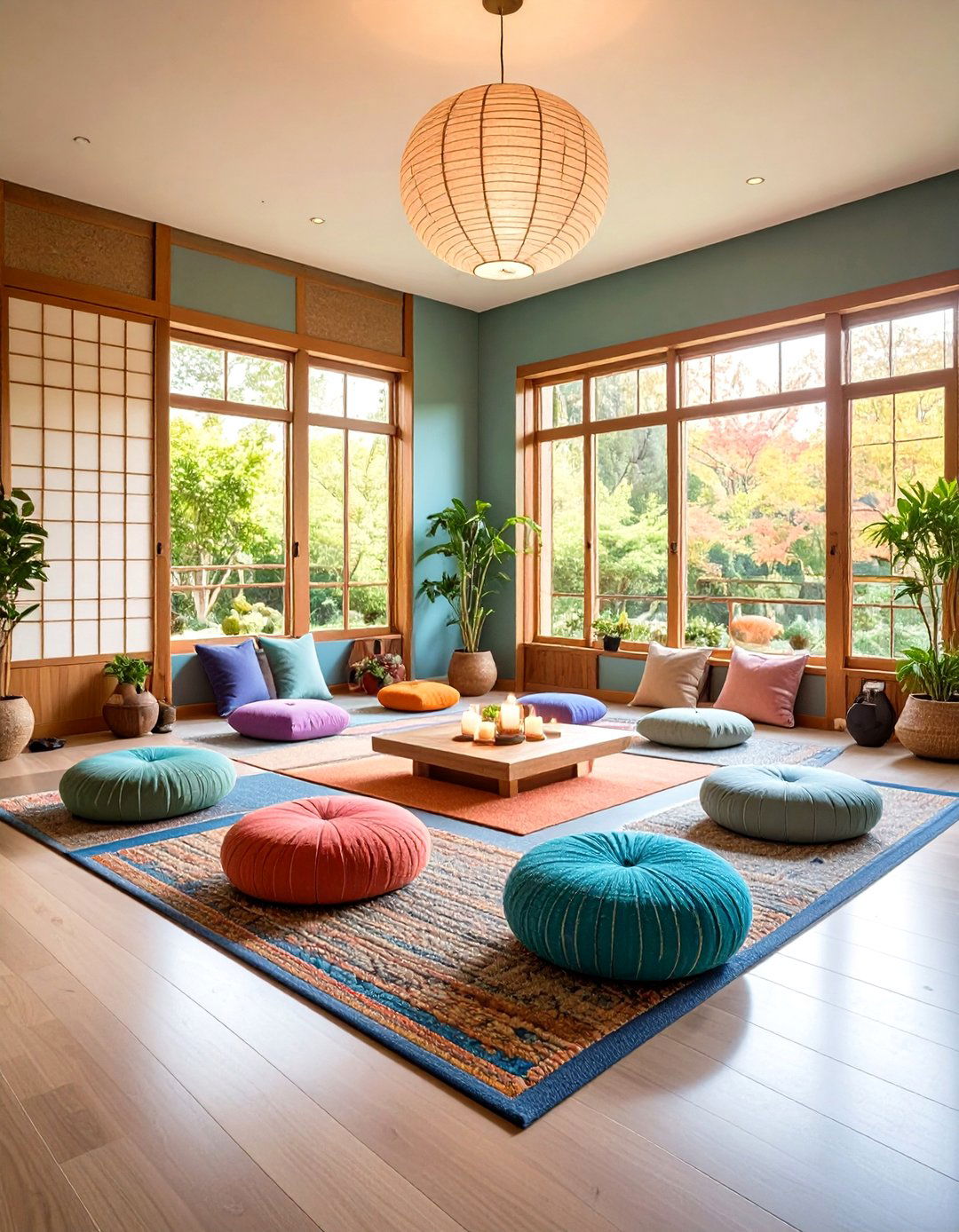
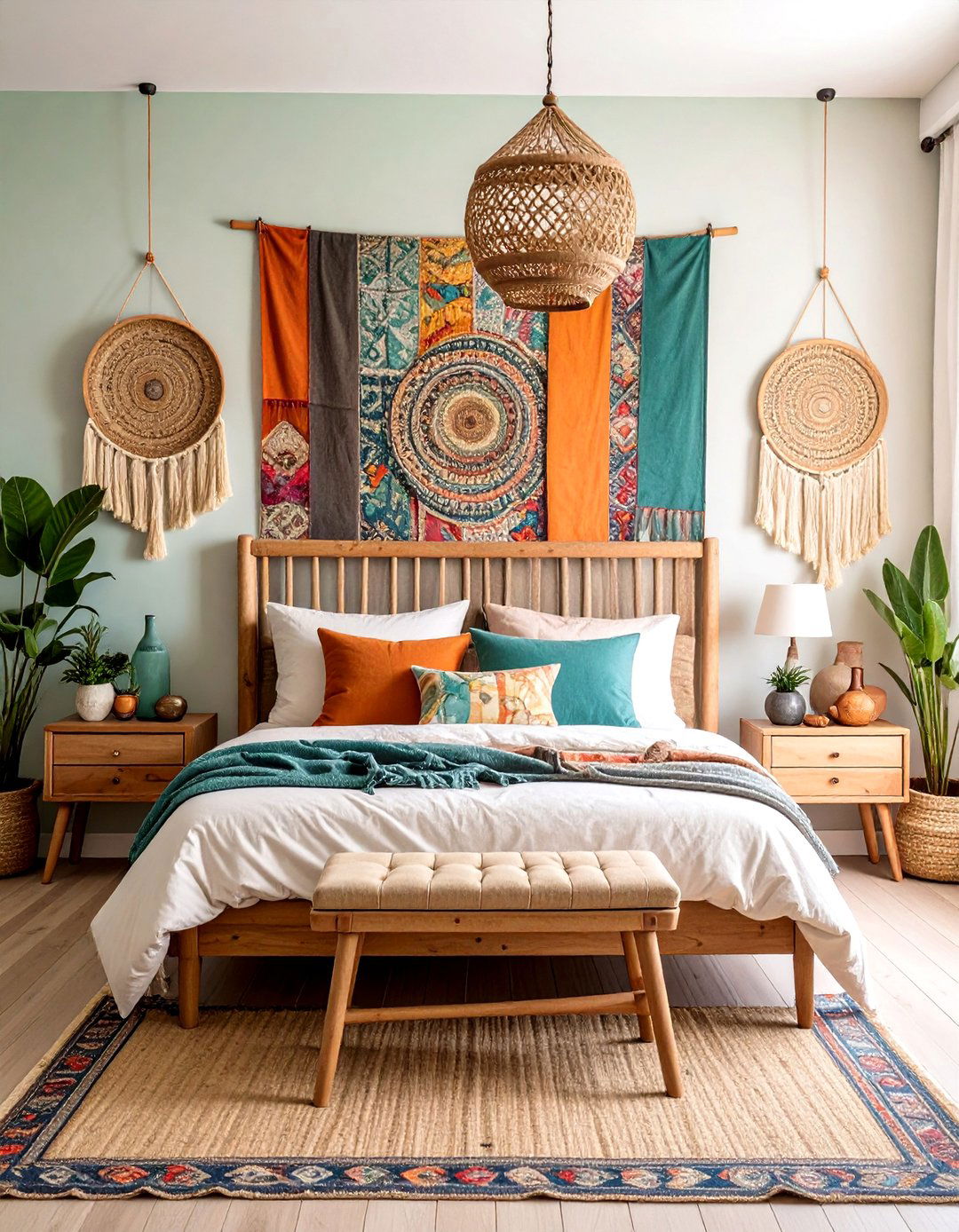

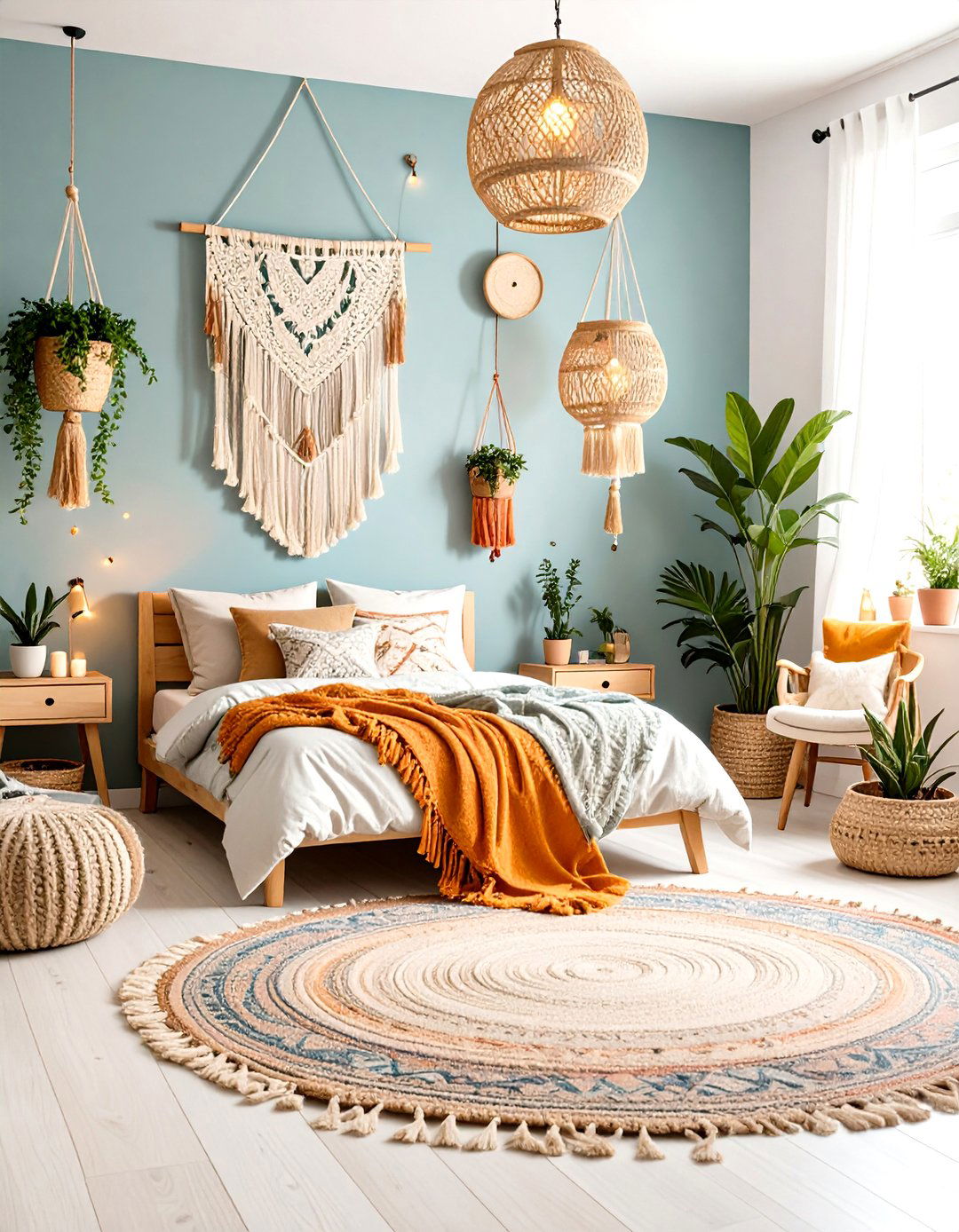

Leave a Reply